Vol. 74, No. 8 (2025)
2025-04-20
SPECIAL TOPIC—Order tuning in disordered alloys
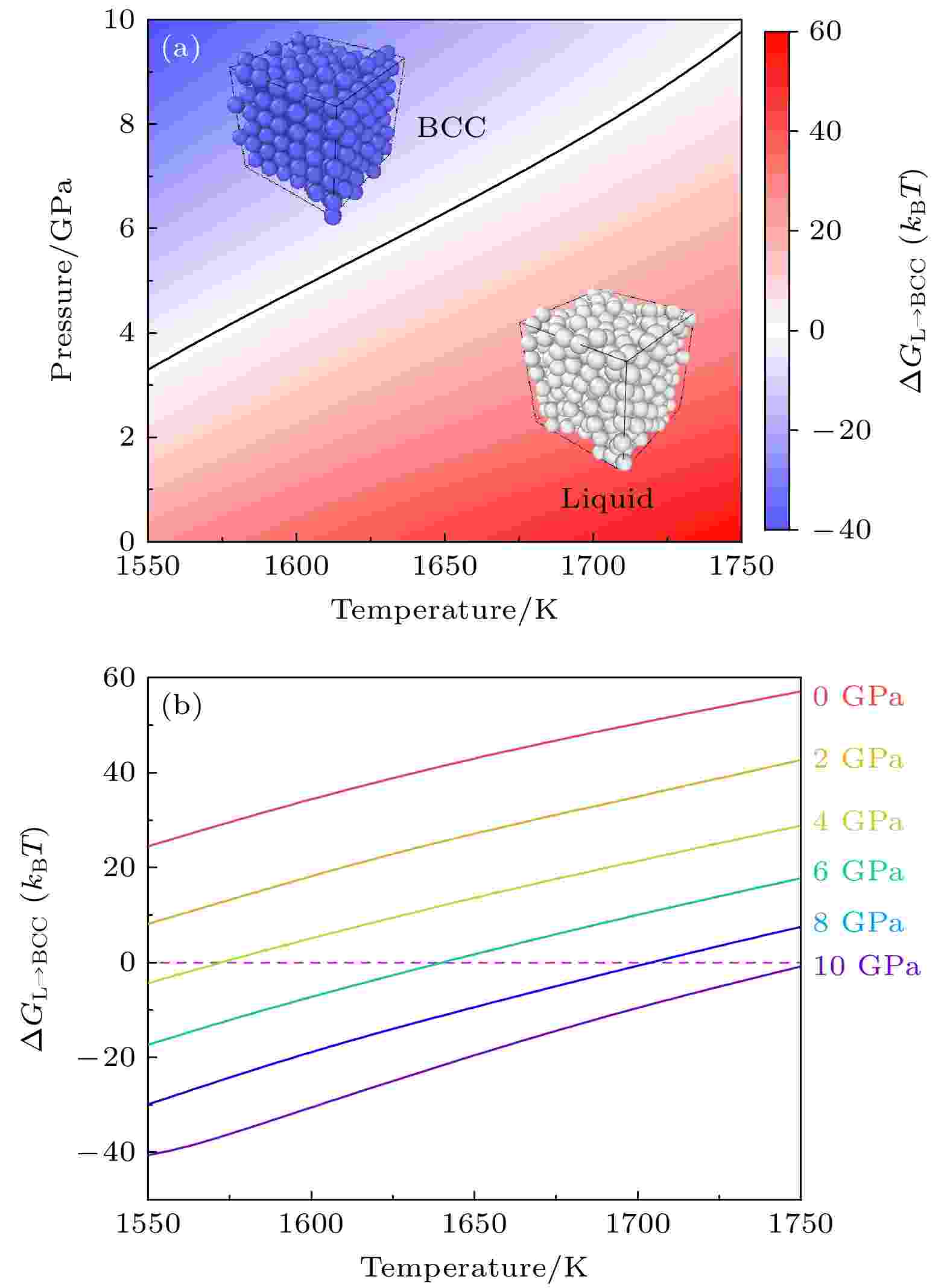
2025, 74 (8): 086101.
doi: 10.7498/aps.74.20250097
Abstract +

2025, 74 (8): 086103.
doi: 10.7498/aps.74.20250141
Abstract +
Medium-entropy alloys (MEAs), renowned for their outstanding strength and ductility, possess great potential for high strain-rate applications. This study focuses on a NiCoV-based MEA system, and proposes a novel alloy design strategy to fabricate the (NiCoV)95W5 alloy by introducing 5% (atomic percent) high-melting-point tungsten through vacuum arc melting coupled with thermomechanical processing. Split Hopkinson pressure bar (SHPB) experiments are conducted to elucidate the dynamic response mechanism and deformation behavior under high strain rates (2000-6000 s–1). The results show that due to severe lattice distortion, the enhanced phonon drag effect at elevated strain rates results in a substantial increase in yield strength from 720 MPa (10–3 s–1) to 1887 MPa (6000 s–1), an increase of 162%, accompanied by a relatively high strain-rate sensitivity (m = 0.42). Microscopic analysis reveals the multi-scale cooperative deformation mechanism of the alloy system under high strain rate. When the strain rate is 2000 s–1, the alloy exhibits a low dislocation density dominated by dislocation planar slip. As the strain rate increases to 4000 s–1, the increased flow stress and deformation promote the proliferation and entanglement of a large number of dislocations into high-density dislocation cells. The accumulation of dislocation stress leads to the coordinated deformation of precipitates and releases stress concentration at the phase interface. When the strain rate further increases to 6000–1, severe plastic deformation will lead to the formation of nanotwins within the matrix, which is the main strain hardening. This study elucidates the dynamic response mechanism of NiCoV MEA mediated by tungsten doping, providing a guidance for designing novel structural materials with excellent dynamic mechanical responses.
SPECIAL TOPIC—Ordering control of amorphous alloys
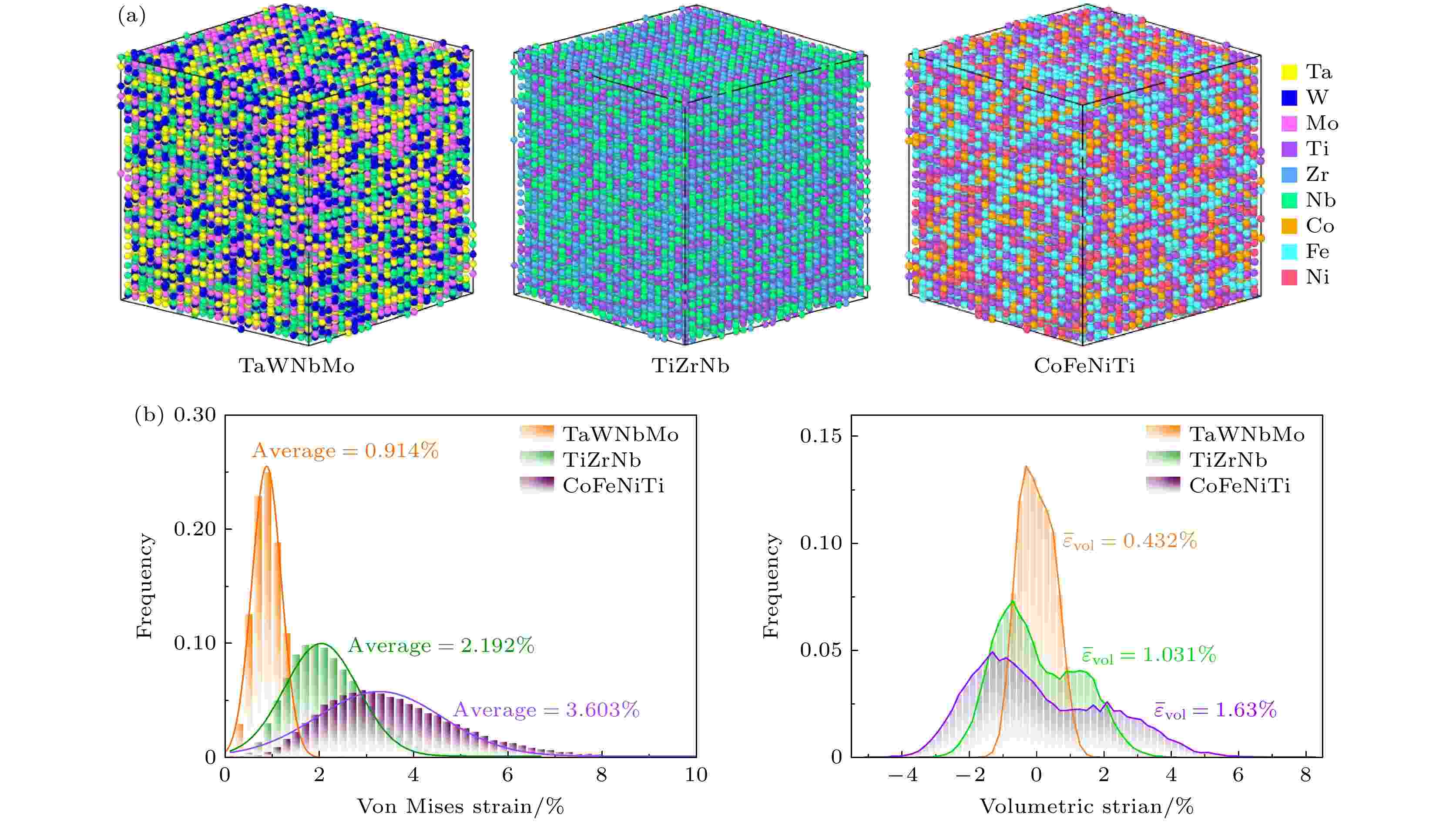
2025, 74 (8): 086102.
doi: 10.7498/aps.74.20250128
Abstract +
Multi-principal element alloys (MPEAs), also known as high-entropy alloys (HEAs), are novel materials that have received significant attention due to their exceptional mechanical properties, thermal stability, and resistance to wear and corrosion. These alloys are typically composed of multiple principal elements in near-equal atomic proportions, forming solid solution phases such as face-centered cubic (FCC) or body-centered cubic (BCC) structures. Despite the promising applications, a more in-depth understanding of the atomic-level behavior, particularly, lattice distortion and atomic strain, is essential to better design and optimize these materials in extreme environments. This study focuses on systematically investigating the atomic-scale lattice distortion characteristics and their influence on atomic strain in three representative BCC-based MPEAs: TaWNbMo, TiZrNb, and CoFeNiTi. We utilize molecular dynamics (MD) simulations to explore the local atomic strain distributions in these alloys at various temperatures. Von Mises strain and volumetric strain are employed as key descriptors to quantify the atomic strain, providing a clear representation of how lattice distortion on an atomic scale influences the overall strain behavior. The study specifically addresses the effects of atomic radius differences, chemical short-range ordering, and temperature on the strain characteristics of the alloys. The results obtained indicate that an increase in lattice distortion corresponds to a broader distribution of von Mises strain and volumetric strain, with strain values significantly amplified. More precisely, alloys with larger atomic radius differences exhibit greater volumetric strain, reflecting the influence of atomic size disparity on strain distribution. Furthermore, the formation of chemical short-range order (CSRO) significantly mitigates lattice distortion and atomic strain. This finding highlights the importance of short-range atomic ordering in enhancing the stability of the alloy structures, thus potentially improving their mechanical properties. Temperature effects are also investigated, revealing that elevated temperature induces more intense atomic vibration, which in turn increases the atomic strain. The findings underscore the complex interplay between atomic-scale phenomena and macroscopic mechanical properties, offering new insights into the microscopic mechanical behavior of high-entropy alloys. This study contributes to a better understanding of the underlying mechanisms driving atomic strain and lattice distortion in MPEAs. The results provide valuable theoretical insights that can guide the design of high-performance alloys tailored for high-temperature and extreme environments. By addressing the key factors influencing atomic strain, such as atomic radius, chemical ordering, and temperature, this work lays the foundation for future research aimed at enhancing the mechanical performance of MPEAs in various industrial applications.
GENERAL

2025, 74 (8): 080701.
doi: 10.7498/aps.74.20250028
Abstract +
Diamond is a kind of extremely functional material, which is widely used in the fields of industry, science and technology, military defense, medical and health, jewelry, and others. However, its application in the semiconductor field is still limited, because its electrical transport performance has not yet met the requirements of semiconductor devices. In order to improve the electrical transport performance of diamond as much as possible, the synthesis of diamond single crystal is studied by adding B2S3 to the synthesis system using temperature gradient growth (TGG) method at a pressure of 6.5 GPa in this work. The growth rate of the synthesized diamond crystal decreases from 2.19 mg/h to 1.26 mg/h, indicating that the growth rate of diamond is dependent not only on the growth driving force, but also on the impurity element in the synthetic cavity. Additionally, with the increase of additive dosage, the color of the synthesized diamond crystal changes from yellow to baby blue . Raman measurement results indicate that the obtained diamond appears as a single sp3 hybrid phase without the sp3 hybrid graphite phase. However, the corresponding Raman characteristic peak of the as-grown diamond crystal is located at about 1331 cm–1 and tends to move towards low wave number. According to Fourier Transform Infrared Spectrometer (FTIR) measurement results, the absorption peaks at 1130 cm–1 and 1344 cm–1 are attributed to nitrogen defects. It is found that the nitrogen defect concentration of the synthesized diamond crystal decreases gradually from about 300×10–6 to 60×10–6. Furthermore, the electrical transport performance of the synthesized diamond is characterized by Hall effect measurement. Diamond has insulating properties due to the absence of any additives in the synthetic cavity. However, the results indicate that when B2S3 is introduced into the synthetic system as additive, there is almost no difference in carrier Hall mobility, but the difference in carrier concentration is as high as two orders of magnitude. Furthermore, the resistivity of the synthesized [111]-oriented diamond crystal decreases to 45.4 Ω·cm, due to the addition of B2S3 to the synthesis system. However, it is worth noting that the resistivity of the diamond crystal synthesized with 0.002 g B2S3 and Ti/Cu additives in the synthesis system drops sharply to 0.43 Ω·cm. Therefore, the nitrogen defects in diamond will have an important effect on its conductivity. It provides an important experimental basis for applying diamond to semiconductor field.

2025, 74 (8): 080401.
doi: 10.7498/aps.74.20241376
Abstract +

2025, 74 (8): 080301.
doi: 10.7498/aps.74.20241223
Abstract +
The max-cut problem (MCP) is a classic problem in the field of combinatorial optimization and has important applications in various fields, including statistical physics and image processing. However, except for some special cases, the MCP still encounters a non-deterministic polynomial complete problem (an NP-complete problem), and there is currently no known efficient classical algorithm that can solve it in polynomial time. The quantum approximate optimization algorithm (QAOA), as a pivotal algorithm in the noisy intermediate-scale quantum (NISQ) computing era, has shown significant potential for solving the MCP. However, due to the lack of quantum error correction, the reliability of computations in NISQ systems sharply declines as the circuit depth of the algorithm increases. Therefore, designing an efficient, shallow-depth, and low-complexity QAOA for the MCP is a critical challenge in demonstrating the advantages of quantum computing in the NISQ era.In this paper, according to the standard QAOA algorithm, we introduce Pauli Y rotation gates into the target Hamiltonian circuit for the MCP. By enhancing the flexibility of quantum trial functions and improving the efficiency of Hilbert space exploration within a single iteration, we significantly improve the performance of QAOA on the MCP.We conduct extensive numerical simulations using the MindSpore quantum platform, and compare the proposed RY-layer-assisted QAOA with standard QAOA and its existing variants, including MA-QAOA and QAOA+. The experiments are performed on various graph types, including complete graphs, 3-regular graphs, 4-regular graphs, and random graphs with edge probabilities between 0.3 and 0.5. Our results show that the RY-layer-assisted QAOA achieves higher approximation ratios in all graph types, particularly in regular and random graphs, where traditional QAOA variants are difficult to implement. Moreover, the proposed method exhibits strong robustness as the graph size increases, and can maintain high performance even for larger graphs. Importantly, the RY-layer-assisted QAOA requires fewer CNOT gates and has a lower circuit depth than the standard QAOA and its variants, making it more suitable for NISQ devices with limited coherence times and high error rates.In conclusion, the RY-layer-assisted QAOA provides a promising approach for solving MCP in the NISQ era. By improving the approximation ratio while reducing circuit complexity, this method demonstrates significant potential for practical quantum computing applications, thus paving the way for developing more efficient and reliable quantum optimization algorithms.
ELECTROMAGNETISM, OPTICS, ACOUSTICS, HEAT TRANSFER, CLASSICAL MECHANICS, AND FLUID DYNAMICS
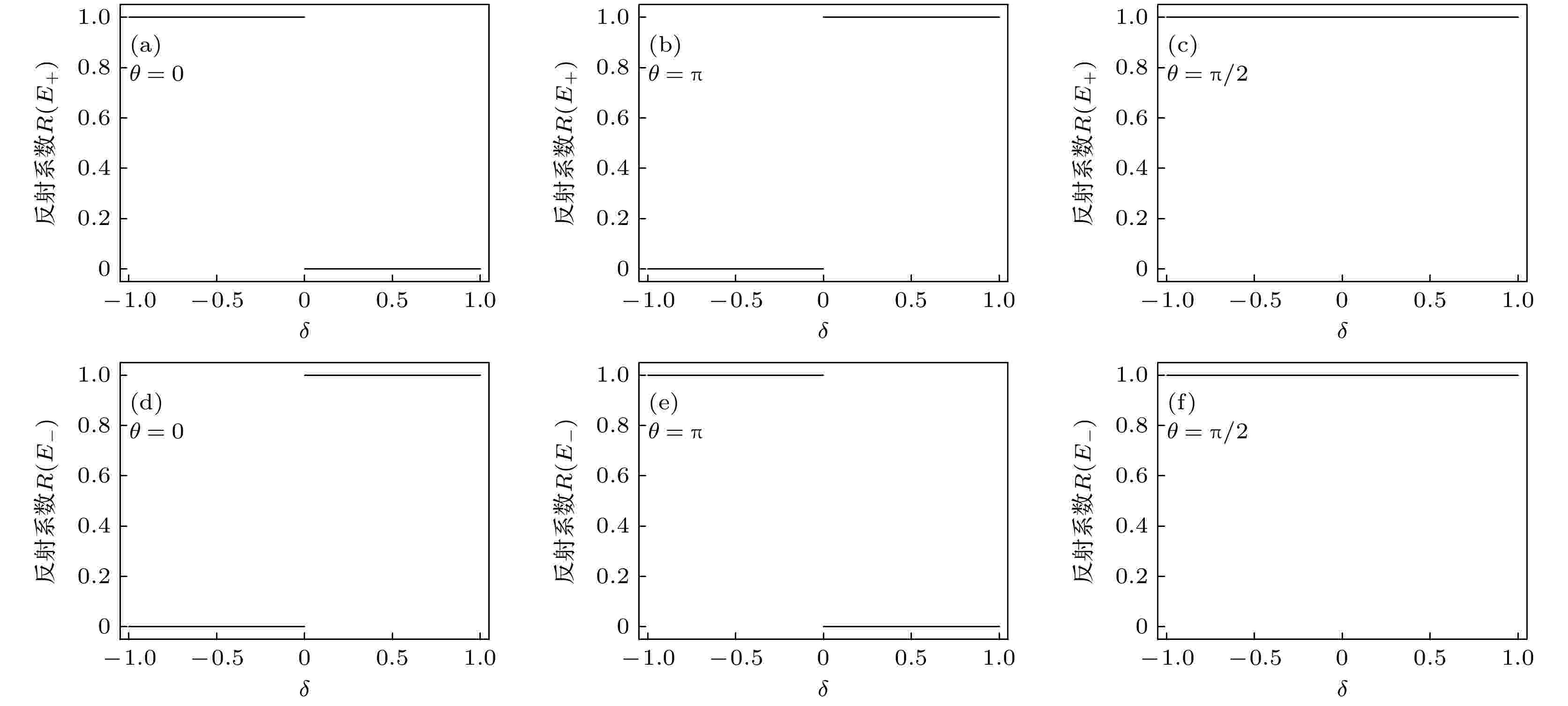
2025, 74 (8): 084205.
doi: 10.7498/aps.74.20250021
Abstract +
The mechanism of controlling single-photon scattering in a hybrid system consisting of superconducting qubits coupled to a Su-Schrieffer-Heeger (SSH) topological photonic lattice is investigated under the influence of an artificial gauge field. This research is driven by the growing interest in the intersection between quantum optics and condensed matter physics, particularly in the field of topological quantum optics, where the robustness of photon transport against defects and impurities can be used for quantum information processing. To achieve this, a theoretical model, which incorporates the phase of the artificial gauge field into the coupling between superconducting qubits and the SSH photonic lattice, is developed in this work. The analytical expressions for the reflection and transmission amplitudes of single photons are derived by using the probability-amplitude method. The results show that the artificial gauge field can effectively control single photon scattering in both the upper energy band and the lower energy band of the SSH lattice, thereby enabling total transmission in the upper band and total reflection in the lower band. This band-dependent scattering behavior exhibits a high degree of symmetry with respect to the lattice momentum and energy bands. Importantly, the reflection coefficient can be made independent of the lattice coupling strength and dependent solely on the topological properties of the lattice. This finding suggests a robust method of detecting topological invariants in photonic lattices. Furthermore, our analysis is extended to various coupling configurations between superconducting qubits and the photonic lattice, highlighting the versatility of the artificial gauge field in manipulating photon transport. These findings not only provide new insights into the control of photon transport in topological photonic lattices, but also open the door to the development of novel quantum optical devices and robust quantum information processing platforms.
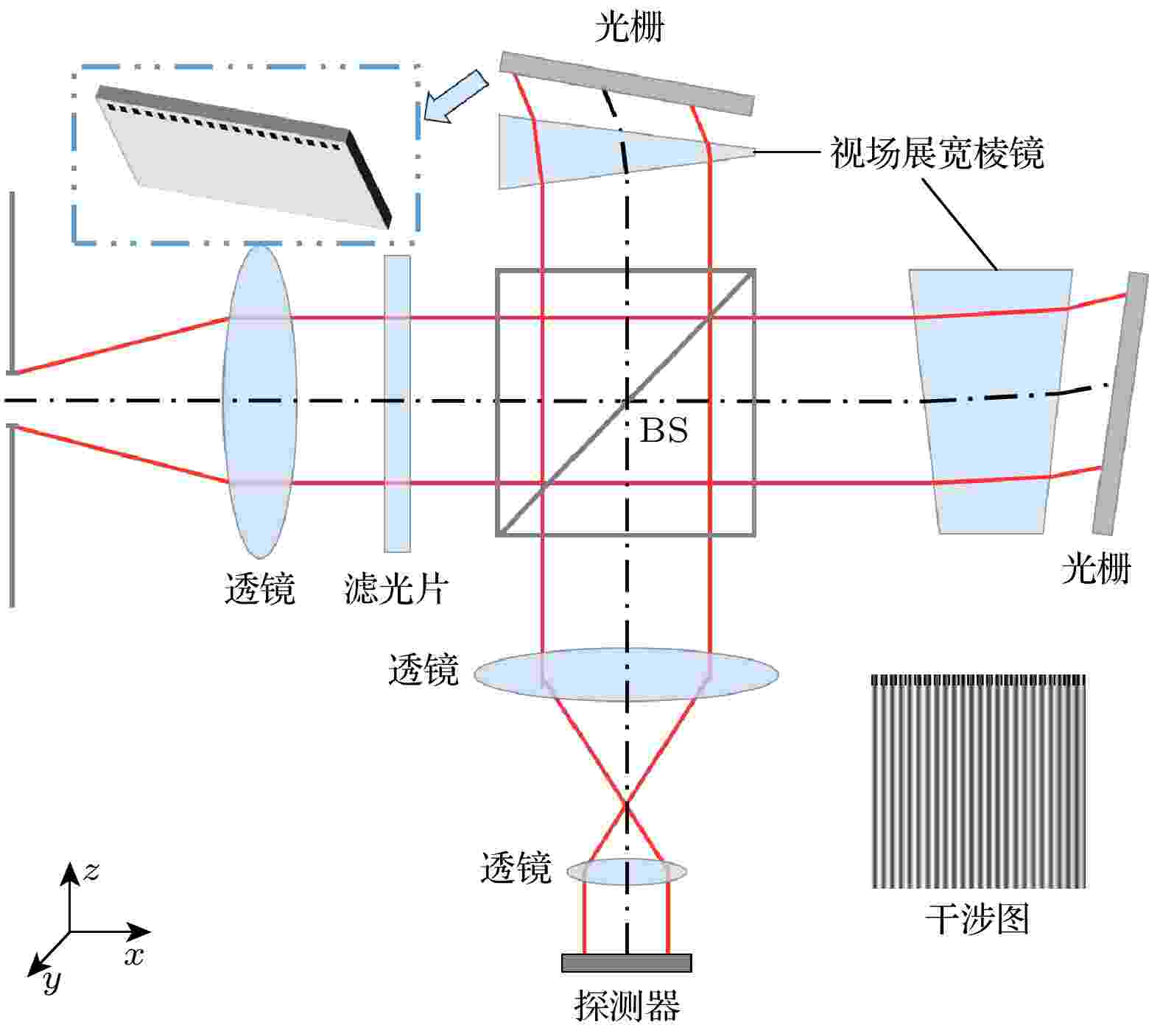
2025, 74 (8): 084201.
doi: 10.7498/aps.74.20250027
Abstract +
Accurate atmospheric wind field measurements are critical for understanding global climate dynamics and facilitating space exploration. Doppler asymmetric spatial heterodyne interferometer (DASH) is used to measure atmospheric wind speed through detecting the phase changes in interferograms induced by Doppler shifts of airglow emission lines. However, environmental temperature fluctuations and mechanical vibrations often cause imaging plane to shift, thereby introducing phase deviations, and degrading the measurement accuracy. In this study, a novel method of monitoring global fitting-based imaging shift is proposed. By etching periodic notches on the diffraction grating surface, the method models and fits the notch patterns formed on the detector plane to achieve precise imaging shift detection and correction. The optimization of notch signal modeling significantly reduces the number of fitting parameters, thus improving computational efficiency and detection precision. Through extensive simulations, the influences of signal-to-noise ratio (SNR) and model parameter variation on detection accuracy are analyzed. The results indicate that when the SNR exceeds 11, the detection uncertainty is still below 6.5 nm. Sensitivity analysis reveals that the detection error stays within acceptable limits when the variations of notch number and notch width are controlled within 40% and 0.7%, respectively, while the influence of edge smoothness parameter of notch pattern is negligible. To validate the performance of the method, the thermal stability is tested by using a near-infrared DASH prototype. The experimental results demonstrate a strong correlation between interferogram phase shifts, imaging plane shifts, and environmental temperature variations. After applying the proposed correction method, local phase fluctuations in the interferogram are significantly reduced, thus the phase stability is improved. Further, artificially applied imaging shifts are accurately detected with errors consistently below 9.96 nm, thereby confirming the reliability and precision of this method. All in all, the proposed method effectively detects and corrects the imaging plane shifts caused by temperature variations, enhancing interferogram phase stability and ensuring high-precision wind speed measurements. This method provides a robust and computationally efficient solution for reducing imaging shifts in DASH systems, and has great potential applications in atmospheric wind field measurement and space-based observation.
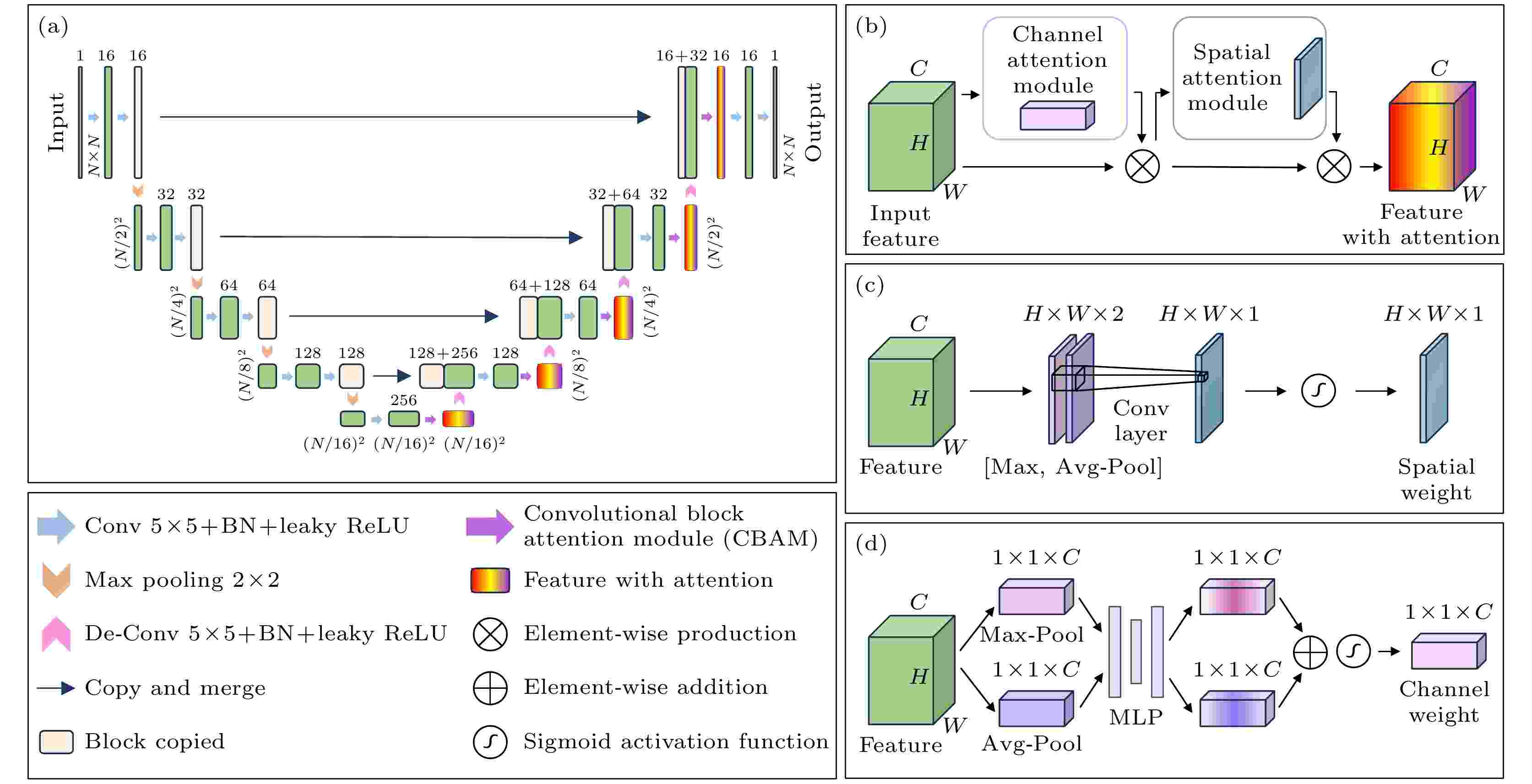
2025, 74 (8): 084202.
doi: 10.7498/aps.74.20250010
Abstract +
This paper presents a novel convolutional neural network-based single-pixel imaging method that integrates a physics-driven fusion attention mechanism. By incorporating a module that combines both channel attention mechanism and spatial attention mechanism into a randomly initialized convolutional network, the method utilizes the physical model constraints of single-pixel imaging to achieve high-quality image reconstruction. Specifically, the spatial and channel attention mechanism are combined into a single module and introduced into various layers of a multi-scale U-net convolutional network. In the spatial attention mechanism, we extract the attention weight features of each spatial region of the pooled feature map by using convolution. In the channel attention mechanism, we pool the three-dimensional feature map into a single-channel signal and input it into a two-layer fully connected network to obtain the attention weight information for each channel. This approach not only uses the critical weighting information provided by the attention mechanism in the three-dimensional data cube but also fully integrates the powerful feature extraction capabilities of the U-net network across different spatial frequencies. This innovative method can effectively capture image details, suppress background noise, and improve image reconstruction quality. During the experimental phase, we employ the optical path of single-pixel imaging to acquire bucket signals for two target images, "snowflake" and "basket". By inputting any noisy image into a randomly initialized neural network with attention mechanism, and using the mean square error between simulated bucket signal and actual bucket signal, we physically constrain the convergence of the network. Ultimately, we achieve a reconstructed image that adheres to the physical model. The experimental results demonstrate that under low sampling rate conditions, the scheme of integrating the attention mechanism can not only intuitively reconstruct image details better, but also demonstrate significant advantages in quantitative evaluation metrics such as peak signal-to-noise ratio (PSNR) and structural similarity (SSIM), confirming its effectiveness and potential application in single-pixel imaging.
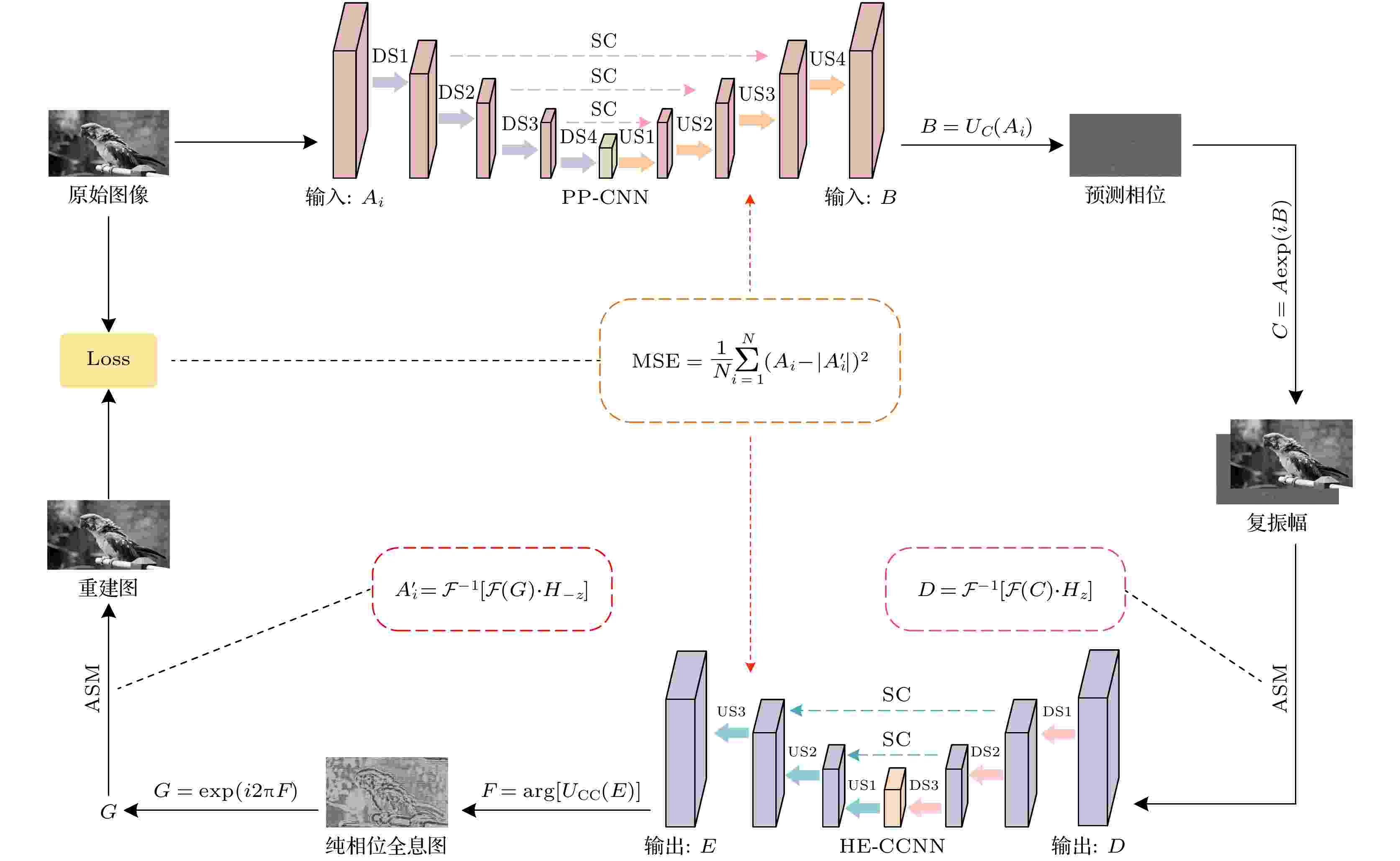
2025, 74 (8): 084203.
doi: 10.7498/aps.74.20241713
Abstract +
In recent years, with the significant improvement of computer performance, deep learning technology has shown an explosive development trend and has been widely used in various fields. In this context, the computer-generated hologram (CGH) generation algorithm based on deep learning provides a new method for displaying the real-time high-quality holograms. The convolutional neural network is a most typical network structure in deep learning algorithms, which can automatically extract key local features from an image and construct more complex global features through operations such as convolution, pooling and full connectivity. Convolutional neural networks have been widely used in the field of holographic displays due to their powerful feature extraction and generalization abilities. Compared with the traditional iterative algorithm, the CGH algorithm based on deep learning has a significantly improved computing speed, but its image quality still needs further improving. In this paper, an attention convolutional neural network based on the angular spectrum diffraction model is proposed to improve the quality as well as the speed of generating holograms. The whole network consists of real-valued and complex-valued convolutional neural networks: the real-valued network is used for phase prediction, while the complex-valued network is used to predict the complex amplitude of the SLM surface, and the phase of the complex amplitude obtained after prediction is used for holographic coding and numerical reconstruction. An attention mechanism is embedded in the down sampling stage of the phase prediction network to improve the feature extraction capability of the whole algorithm, thus improving the quality of the generated phase-only holograms. An accurate diffraction model of the angular spectrum method is embedded in the whole network to avoid labeling the large-scale datasets, and unsupervised learning is used to train the network. The proposed algorithm can generate high-quality 2K (resolution ratio of 11920×1072) holograms within 0.015 s. The average peak signal-to-noise ratio of the reconstruction images reaches up to 32.12 dB and the average structural similarity index measure of the generated holograms can achieve a value as high as 0.934. Numerical simulations and optical experiments verify the feasibility and effectiveness of the proposed attentional convolutional neural network algorithm based on the diffraction model of angular spectrum method, which provides a powerful help for applying the deep learning theory and algorithm to the field of real-time holographic display.

2025, 74 (8): 084204.
doi: 10.7498/aps.74.20250081
Abstract +
The Rydberg-based microwave detection is an all-optical technology that uses the strong coherent interaction between Rydberg atoms and microwave field. Different from the traditional microwave meter, the Rydberg atomic sensing is a new-type microwave detector that transforms the microwave spectrum into a coherent optical spectrum, and arouses increasingly the interests due to its high sensibility. For this kind of sensor, the coherence effect induced by coupling atoms with microwave plays a key role, and the decoherence may reduce the sensitivity. A multi-level Rydberg atomic scheme with optimized quantum coherence, which enhances both the bandwidth and the sensitivity for 4 GHz microwave sensing, is demonstrated experimentally in this work. The enhanced quantum coherence of Rydberg electromagnetically induced transparency (EIT) and microwave induced Autler-Townes (AT) splitting in EIT windows are shown using optical pumping at D1 line. The enhanced sensitivity at 3.4 GHz with 0.3 GHz bandwidth can be realized, based on the enhanced EIT-AT spectrum. The experimental results show that in the stepped Rydberg EIT system, the spectral width of EIT and microwave field EIT-AT can be narrowed by optical pumping (OP), so the sensitivity of microwave electric field measurement can be improved. After optimizing the EIT amplitude and adding single-frequency microwaves, the sensitivity of the microwave electric field measurement observed by the AT splitting interval is improved by 1.3 times. This work provides a reference for utilizing atomic microwave detection.
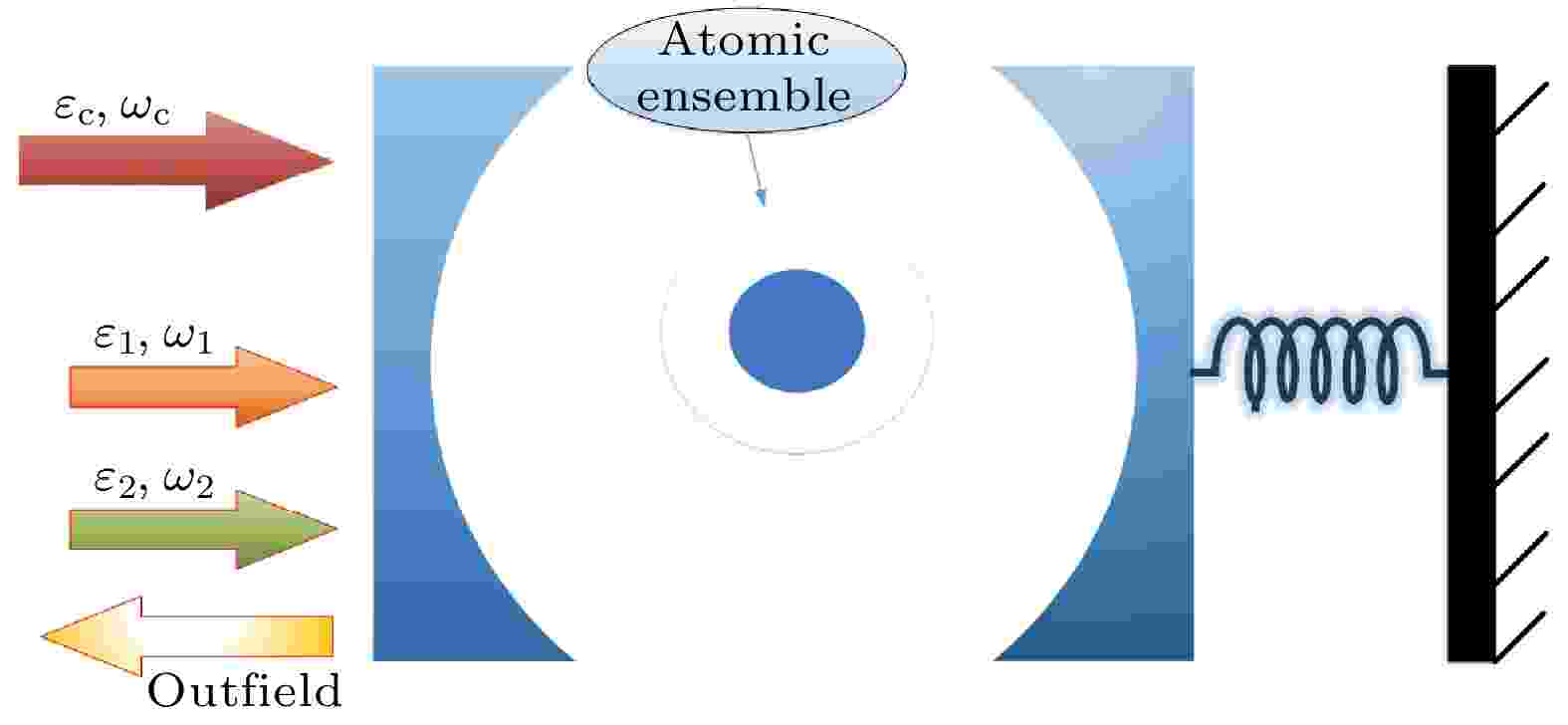
2025, 74 (8): 084206.
doi: 10.7498/aps.74.20241432
Abstract +
Cavity optomechanics, as a cross-discipline between nanophotonics and quantum mechanics, provides a unique platform for investigating optomechanical coupling between photons in microcavities and phonons from mechanical modes. It has a wide range of potential applications in quantum physics, and now it has become a hot topic. A theoretical scheme to enhance the sum sideband generation (SSG) via a two-level atom ensemble is proposed. The effect of the atomic ensemble’s detuning frequency on the efficiency of the SSG is considered by introducing a two-level atom medium. The results indicate that the efficiency of the generating sideband can be significantly enhanced under either red or blue detuning of the atoms, with greater dependence and more pronounced enhancement under the red detuning. In addition, we also consider the effect of pump power, which can effectively enhance the intensity of the output signal by selecting the appropriate pump power. More interestingly, the sensitivity of SSG to atomic detuning also indicates that the precise control of the atomic detuning frequency can achieve the fine-tuning of the SSG process. Furthermore, the cavity-atom coupling strength and atom decay rate are discussed for the transmission characteristics of the sum sideband signals. It is found that the efficiency of SSG can be effectively adjusted by the cavity-atom coupling strength and atom decay rate. The results show that the efficiency of SSG can be significantly improved by optimizing system parameters. The method of enhancing SSG may have potential application prospects in measuring high-precision weak forces and on-chip manipulation of light propagation.
CONDENSED MATTER: ELECTRONIC STRUCTURE, ELECTRICAL, MAGNETIC, AND OPTICAL PROPERTIES

2025, 74 (8): 087801.
doi: 10.7498/aps.74.20250005
Abstract +
Rare-earth orthoferrites (RFeO3) have received significant attention due to their intricate magnetic interactions and potential applications in ultrafast spintronic devices. Among them, DyFeO3 exhibits rich magnetic phase transitions driven by the interplay between Fe3+ and Dy3+ sublattices. Previous studies mainly focused on temperature-induced spin reorientation near the Morin temperature (TM~50 K), but there has been limited exploration of magnetic phase behavior under external fields above TM. This work aims to systematically investigate the temperature- and magnetic-field-dependent magneto-dynamic properties of a-cut DyFeO3 single crystals, with an emphasis on identifying novel phase transitions and elucidating the underlying mechanisms involving Fe3+-Dy3+ anisotropic exchange interactions. High-quality a-cut DyFeO3 single crystals are grown using the optical floating zone method and characterized by X-ray diffraction (XRD) and Laue diffraction. Time-domain terahertz spectroscopy (THz-TDS) coupled with a superconducting magnet (0–7 T, 1.6–300 K) is employed to probe the ferromagnetic resonance (FM) and antiferromagnetic resonance (AFMR) modes. By analyzing the frequency trends in the spectra, the response of internal magnetic moments to external stimuli can be inferred. In the zero magnetic field experiment, it is found that the temperature induced spin reorientation (Γ4→Γ1) occurs at Morin temperature (~50 K) with temperature decreasing. A broadband electromagnetic absorption (0.45–0.9 THz) occurs below 4 K, which is attributed to electromagnons activated by broken inversion symmetry in the Dy3+ antiferromagnetic state. Above the Morin temperature, the absorption spectra of the sample are measured at constant temperatures (70, 77, 90, 100 K) and magnetic fields ranging from 0 to 7 T. The experimental results show that with the increase of magnetic field, a new magnetic phase transition occurs (Γ 4 → Γ 24 → Γ 2 → Γ 24 → Γ 2 ), and the critical magnetic field of the phase transition varies with temperature. The phase transitions arise from the competition between external magnetic fields and internal effective fields generated by anisotropic Fe3+-Dy3+ exchange. These findings contribute to the further understanding of the magnetoelectric effects in RFeO3 systems and provide a roadmap for using field-tunable phase transitions to design spin-based devices .
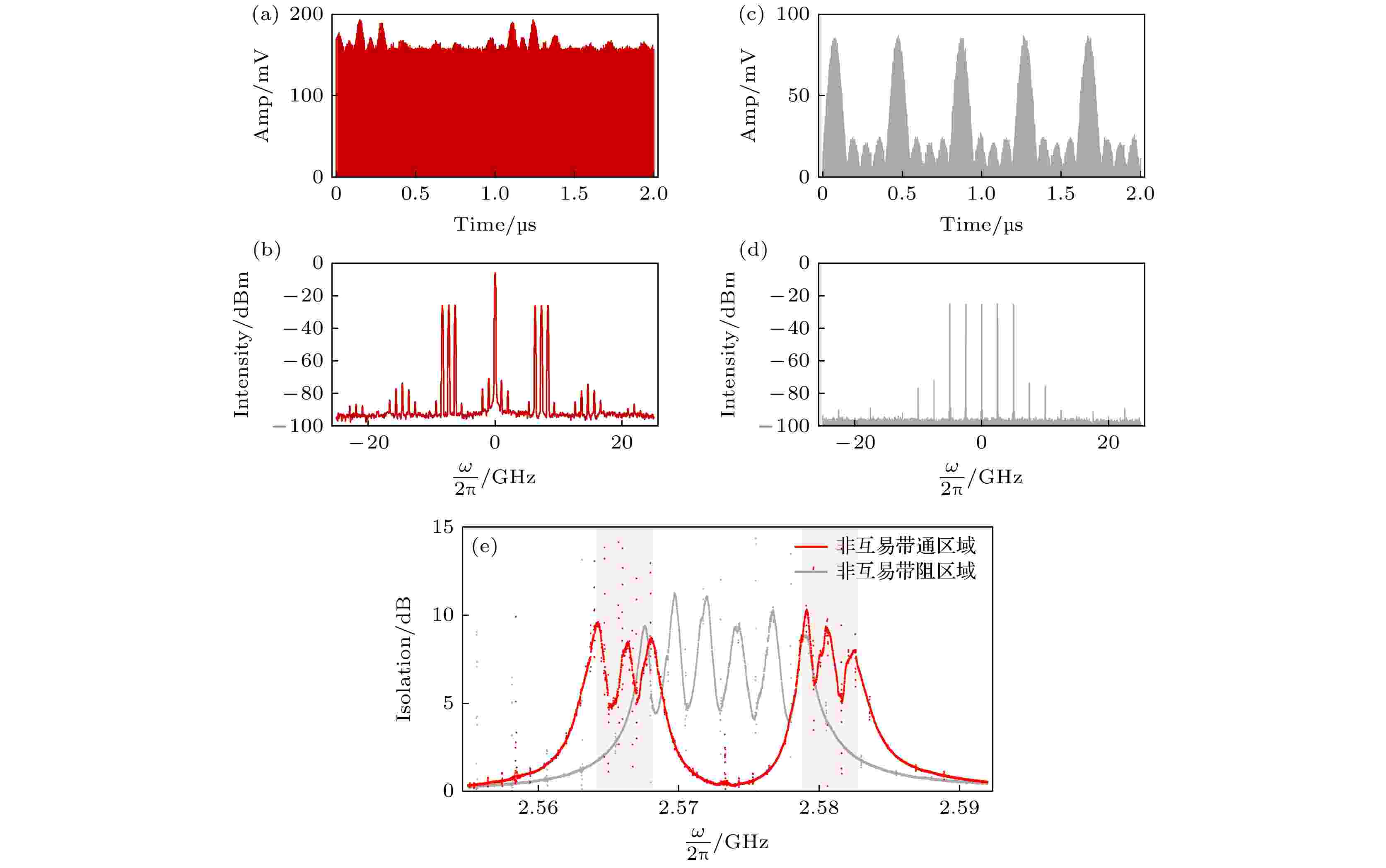
2025, 74 (8): 087501.
doi: 10.7498/aps.74.20241666
Abstract +
Nonreciprocal electromagnetic wave transmission is essential for wireless communication, quantum computing, and radar systems, traditionally relying on breaking time-reversal symmetry through static magnetic fields or structural modifications, which face limitations in tunability and integration. Recent advancements in cavity magnonics, particularly the use of bound states in the continuum (BIC) and pump-induced magnon mode (PIM), have enhanced the nonreciprocal isolation and dynamic control of magnon dynamics. In this study, a novel method to achieve broadband-tunable microwave nonreciprocal isolation is presented by introducing multiple modulated pump signals, thereby extending traditional single-mode magnon-based nonreciprocal transmission to multi-channel and broadband regimes. The core method involves exciting multiple PIMs in a cavity magnonics system and strongly coupling them with BIC to generate hybrid modes with pronounced nonreciprocal characteristics. The experimental setup is comprised of a 1-millimeter-diameter yttrium iron garnet (YIG) sphere positioned at the node of a microwave resonator (central frequency: 2.92 GHz), with pump signals injected through a microwave patch antenna. By dynamically tuning the frequency, power, and number of pump signals, the precise control over the number of nonreciprocal isolation channels and their spectral positions is realized. Notably, the continuous tuning of the nonreciprocal bandwidth is achieved by increasing the number of pump signals from 2 to 5, expanding the isolation bandwidth from 6 MHz to 14 MHz. Furthermore, by tailoring the spectral distribution of pump signals, the system realizes flexible switching between bandpass and band-stop isolation states. Importantly, this method eliminates the need of static magnetic field adjustments or structural reconfiguration, relying solely on coherent microwave-photon interactions to modulate PIM-BIC coupling. Experimental results highlight two key physical outcomes: 1) Extending conventional single-mode magnonic nonreciprocal transmission to multi-channel and broadband-tunable regimes; 2) achieving microwave nonreciprocal control without the need of static magnetic field adjustments or structural reconfiguration. These advances establish a robust platform for designing reconfigurable multi-channel isolators and circulators, which can be directly applied to microwave communication systems, quantum information processing, and radar technologies.
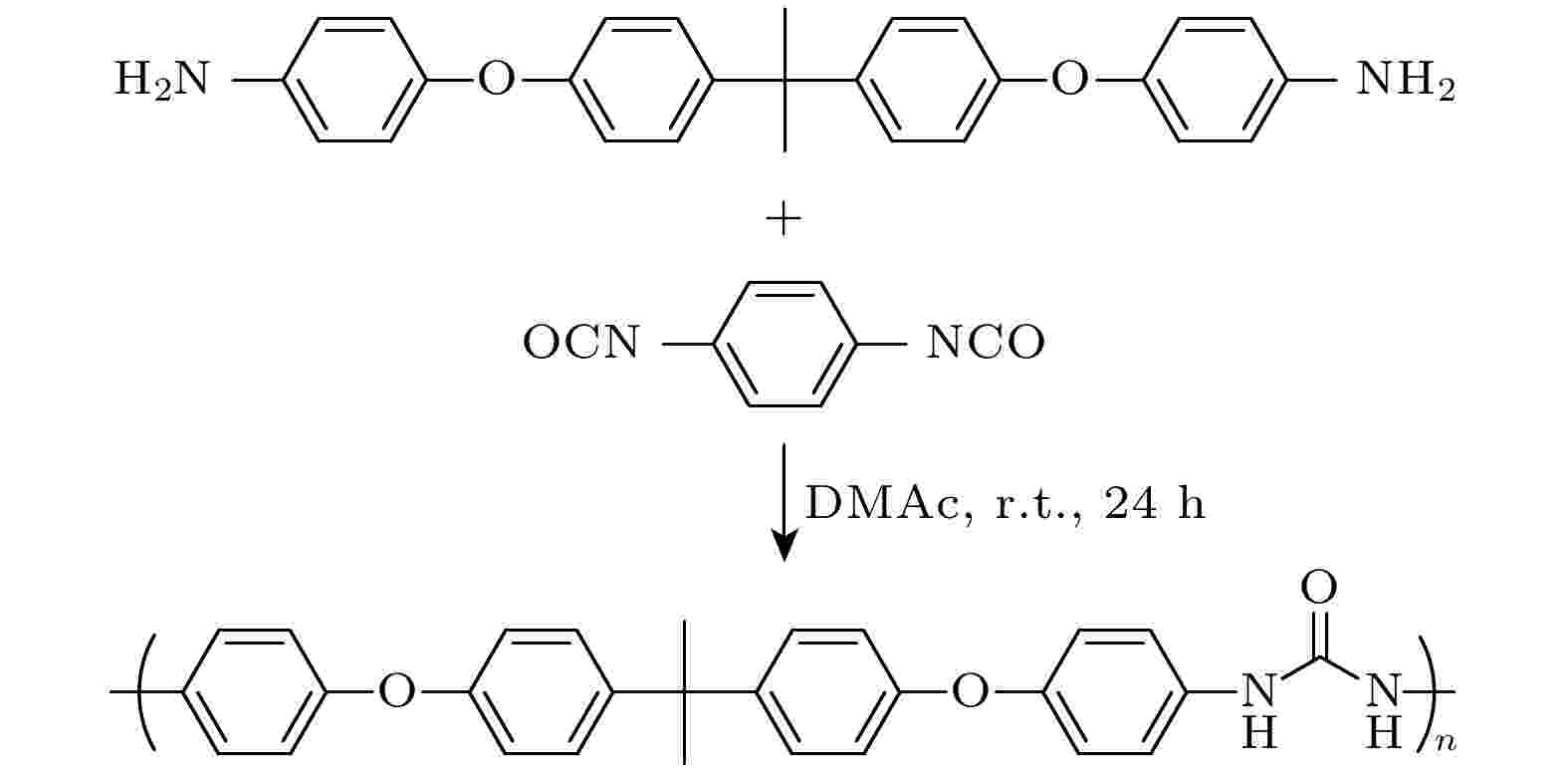
2025, 74 (8): 087701.
doi: 10.7498/aps.74.20241579
Abstract +
Dielectric capacitors are essential energy storage devices with high power density. The dielectric films of capacitors will age at working temperatures, a leading their performance to degrade. Polyurea (PU) is a potential working dielectric for capacitors with high energy density and low dielectric loss. However, the aging characteristics and underlying mechanism of PU have not been discussed. Considering the operating temperature of commercial dielectric capacitors, the aging characteristics of PU are investigate by being exposed to 80 °C for different durations. Compared with dielectric constant, breakdown strength changes significantly with aging time which can be used as a characteristic parameter to evaluate the aging degree of PU. Combining experimental method and simulation method, the correlation between molecular structure, trap properties and breakdown strength during thermo-oxidative aging is studied and established. The results show that the thermal-oxidative aging of PU can be divided into three stages. In the early stage of aging, the bridging effect of oxygen promotes the order arrangement of molecular chains. In this stage, the molecular chain spacing decreases, but the H-bonding interaction between adjacent urea groups is enhanced slightly as shown in Fig. (a). As a result, the dielectric constant decreases, while the breakdown strength is almost unchanged. In the middle stage of aging, ether bonds break and inducing the formation of biphenyl structures and resulting in a disordered structure as illustrated in Fig. (b). The enhanced mobility effect increases the dielectric constant. Meanwhile, the biphenyl structures deepen the trap depth, resulting in the decrease of carrier mobility and the increase of the breakdown strength. In the late stage of aging, oxygen promotes the decomposition of urea groups, thereby reducing the number of urea groups that form deep traps. At the same time, the main chain undergoes breakage, releasing small molecules such as CO2 and H2O, which is shown in Fig. (c). These factors collectively lead to a significant reduction in the breakdown strength of PU. In addition, the variations of dielectric constant, breakdown strength and energy density in the three stages are summarized in Fig. (d).
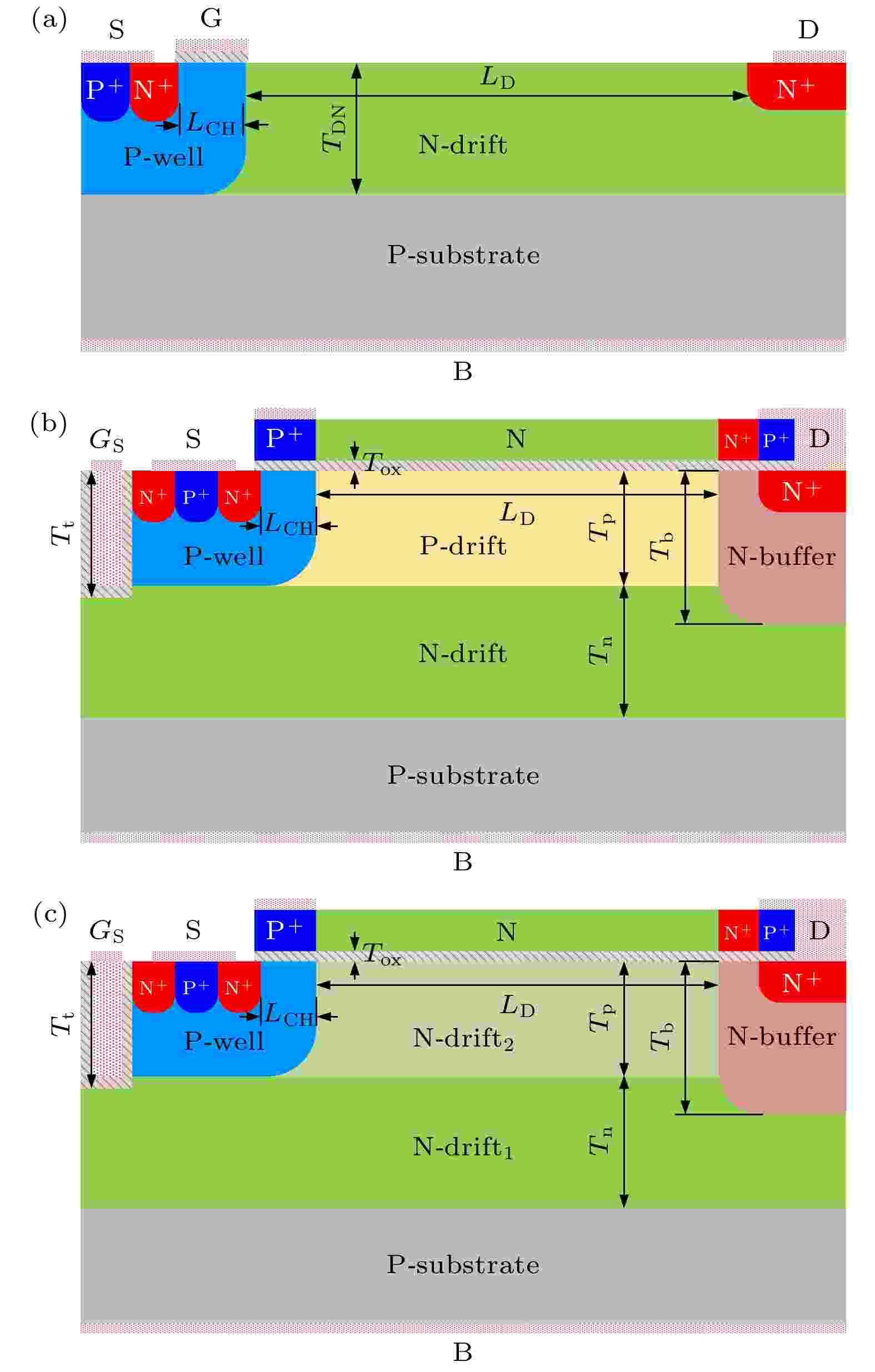
2025, 74 (8): 087301.
doi: 10.7498/aps.74.20241554
Abstract +
In order to improve the contradictory between specific on-resistance (Ron,sp) and breakdown voltage (BV) of lateral double-diffused metal oxide semiconductor (LDMOS) and enhance the turn-off characteristic, this paper proposes a novel LDMOS device with dual-drift regions and dual-conduction paths, which achieves an ultra-low Ron,sp. The key feature of the proposed device is the introduction of a dual-drift region structure with alternating P-type and N-type regions, combined with planar and trench gates to control the P-type and N-type drift regions, respectively. This configuration enables the formation of two independent electron conduction paths within the drift region. When a positive voltage is applied to the planar gate, a voltage difference is generated between the surface of the P-type drift region and the body of device’s drift. Therefore, under the influence of the voltage difference, the electrons are pulled to the surface of the P-type drift region to invert and form a high-density electron inversion layer that connects the channel and the N+ drain, significantly increasing the electron density during conduction and reducing the Ron,sp. The introduction of the trench gate provides an additional electron disappearance path, which shortens the device's turn-off time (toff). Furthermore, the introduction of the P-type drift region facilitates the recombination of electrons with holes within the P-type drift region, accelerating the electron disappearance process and further reducing the device’s toff. Furthermore, the proposed device exhibits a more uniform electric field distribution and higher voltage capability is due to the P+N-N+P+ structure adopted in the PolySi-top layer. During the off-state, both the P+N- junctions and the N+P+ junctions generate electric field peaks at the interfaces. These peaks modulate the electric field distribution across the surface of the drift region. Simulation results indicate that at the BV with a level of 200V, the proposed LDMOS exhibits an Ron,sp of 3.43 mΩ·cm² and a toff of 9 ns. Compared with conventional LDMOS devices, the proposed LDMOS possesses a 90% reduction in Ron,sp and an 11.6% decrease in toff. The proposed device not only achieves an excellent trade-off between Ron,sp and BV but also shortens the toff, demonstrating that the device achieves superior performance.
REVIEW

2025, 74 (8): 087401.
doi: 10.7498/aps.74.20241778
Abstract +
SPECIAL TOPIC—Precision spectroscopy of few-electron atoms and molecules
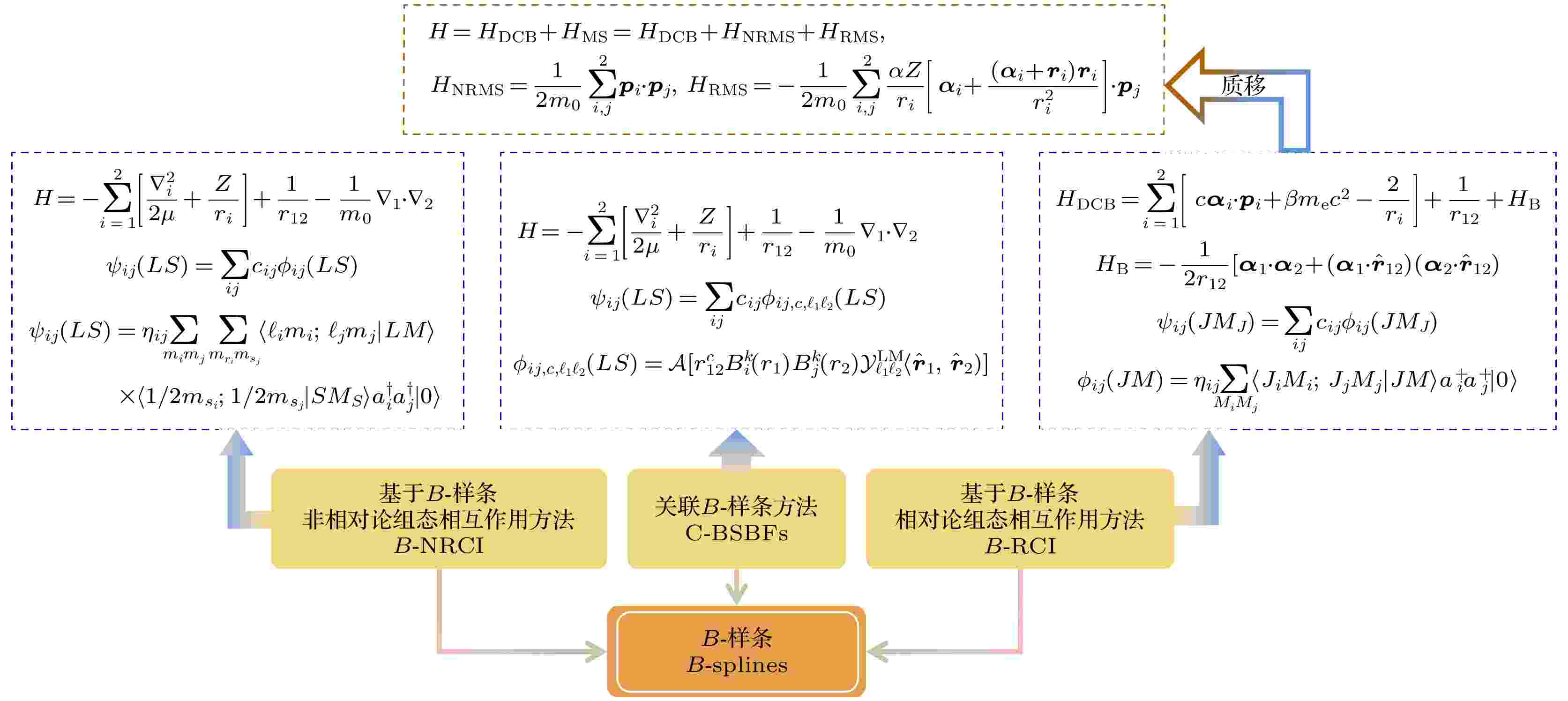
2025, 74 (8): 083101.
doi: 10.7498/aps.74.20241728
Abstract +
The precise spectra of few-electron atoms plays a pivotal role in advancing fundamental physics, including the verification of quantum electrodynamics (QED) theory, the determination of the fine-structure constants, and the exploration of nuclear properties. With the rapid development of precision measurement techniques, the demand for atomic structure data has evolved from simply confirming existence to pursuing unprecedented accuracy. To meet the growing needs for precision spectroscopy experiments, we develop a series of high-precision theoretical methods based on B-spline basis sets, such as the non-relativistic configuration interaction (B-NRCI) method, the correlated B-spline basis functions (C-BSBFs) method, and the relativistic configuration interaction (B-RCI) method. These methods use the unique properties of B-spline functions, such as locality, completeness, and numerical stability, to accurately solve the Schrödinger and Dirac equations for few-electron atoms. Our methods yield significant results, particularly for helium and helium-like ions. Using these methods, we obtain accurate energies, polarizabilities, tune-out wavelengths, and magic wavelengths. Specifically, we achieve high-precision measurements of the energy spectra of helium, providing vital theoretical support for conducting related experimental researches. Additionally, we make high-precision theoretical predictions of tune-out wavelengths, paving the way for new tests of QED theory. Furthermore, we propose effective theoretical schemes to suppress Stark shifts, thereby facilitating high-precision spectroscopy experiments of helium. The B-spline-basis methods reviewed in this paper prove exceptionally effective in high-precision calculations for few-electron atoms. These methods not only provide crucial theoretical support for precision spectroscopy experiments but also pave the new way for testing QED. Their ability to handle large-scale configuration interactions and incorporate relativistic and QED corrections makes them versatile tools for advancing atomic physics research. In the future, the high-precision theoretical methods based on B-spline basis sets are expected to be extended to cutting-edge fields, such as quantum state manipulation, determination of nuclear structure properties, formation of ultracold molecules, and exploration of new physics, thus continuously promoting the progress of precision measurement physics.
SPECIAL TOPIC—Correlated electron materials and scattering spectroscopy
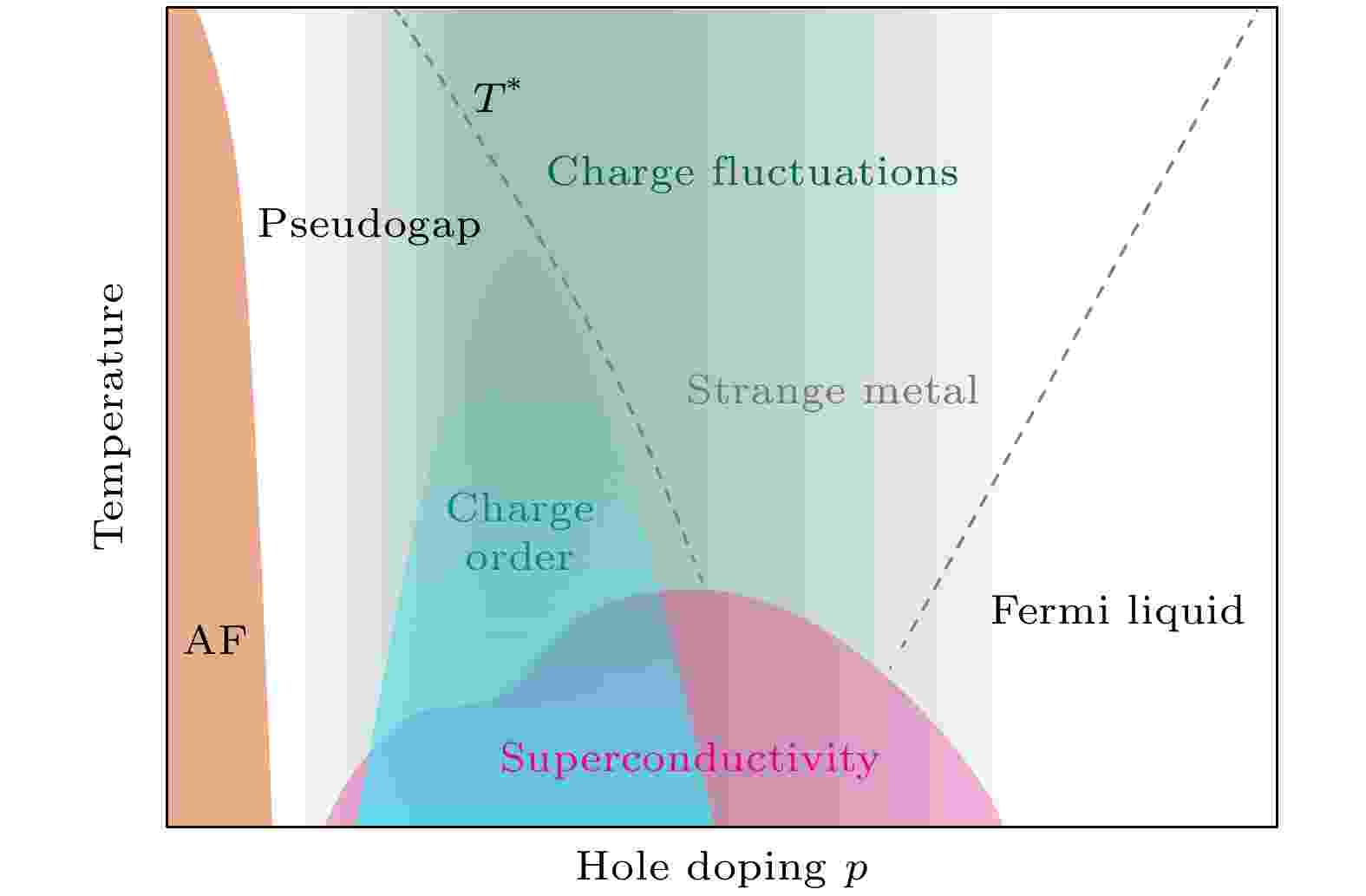
2025, 74 (8): 087402.
doi: 10.7498/aps.74.20241402
Abstract +
Unconventional superconductivity often competes or coexists with a variety of complex material states. In cuprate superconductors, there exist states including spin order, charge order, the pseudogap state, and the strange metal phase. A comprehensive understanding of their relationship is fundamental to establishing the mechanism of high-temperature superconductivity. Spin dynamics in cuprates has been extensively investigated using inelastic neutron scattering, but charge correlations remain far less understood. The latest development of resonant X-ray scattering (RXS) has been able to detect charge correlations with unprecedented sensitivity. A series of RXS studies have revealed that there universally exist the charge correlations in cuprate materials, which covers a wide range of the phase diagram. Resonant inelastic X-ray scattering (RIXS) experiments further show the dynamical behaviors of charge order. These findings highlight the important influence of charge correlations on the properties of cuprates. In this paper, we review the latest research progress in the charge order in cuprates by using RXS, with a particular emphasis on RIXS experiments. Our focus is placed on recent works on dynamical charge correlations at high temperatures as well as uniaxial strain tuning of charge order. We discuss topics including the underlying interactions, microscopic structure and symmetries, and the possible influence of charge order on both the superconducting and normal states.
INTERDISCIPLINARY PHYSICS AND RELATED AREAS OF SCIENCE AND TECHNOLOGY
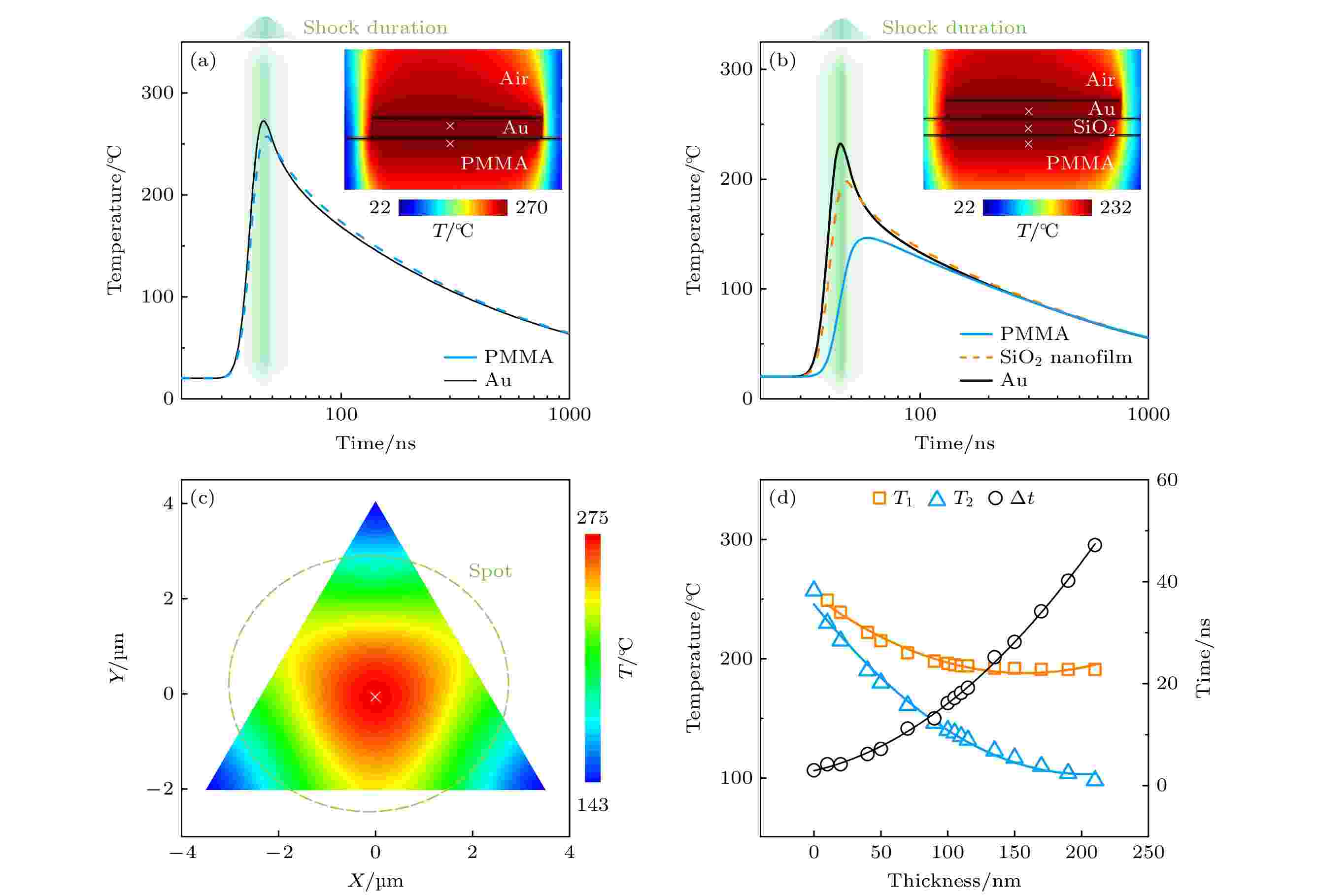
2025, 74 (8): 088703.
doi: 10.7498/aps.74.20241654
Abstract +
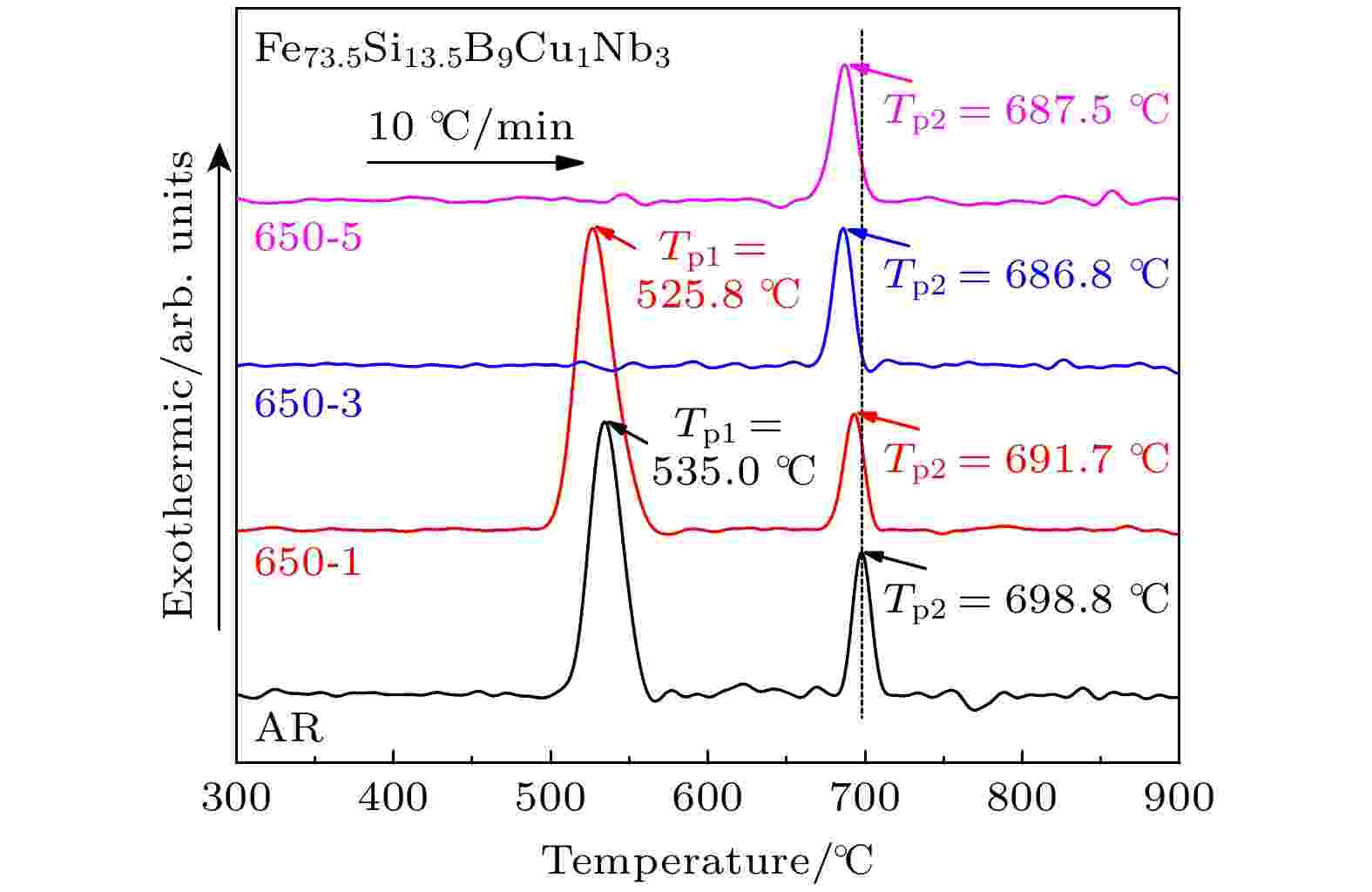
2025, 74 (8): 088101.
doi: 10.7498/aps.74.20250112
Abstract +
Fe-based amorphous alloys are widely used in electronic devices such as high-frequency transformers and choke cores due to their low coercivity, low loss, and high saturation magnetic induction intensity. However, these alloys have a relatively low crystallization temperature and are prone to oxidation, which limits their applications in high-temperature environments. The addition of copper and niobium elements can suppress the growth of crystal nuclei and improve thermal stability. However, the influences on the alloy's high-temperature oxidation resistance and structural evolution are still unclear. In this work, static air oxidation is used to investigate the microstructure evolution of Fe73.5Si13.5B9Cu1Nb3 amorphous alloy after high-temperature oxidation and its influence on magnetic properties. Besides, long-time oxidation, say, 3000 hours or longer at 500 ℃, is generally hard to perform in the laboratory. Thus, the Van’t Hoff’s rule is used to evaluate outcomes under the condition of the long-time and relatively low-temperature oxidation through using rapid high-temperature oxidation. Based on Van’t Hoff’s rule, the oxidation at 650 ℃ for 5 min will show similar or more severe oxidation effects on the microstructure of Fe73.5Si13.5B9Cu1Nb3 alloy after oxidation at 500 ℃ for 2730 h. The microstructure evolution reveals that silicon and niobium in this alloy will quickly diffuse toward the sample surface during oxidation at 650 ℃, and these two elements will form a dense layer to impede oxygen diffusion. Meanwhile, an α-Fe(Si) phase, mainly composed of iron elements, will be generated in the alloy, with its grain size slowly increasing in the oxidation process. Thermodynamic analysis indicates that the segregation of silicon and niobium can preserve the thermodynamic stability of the alloy system during oxidation and suppress the formation of intermetallic compounds during crystallization. The magnetic hysteresis loop results show that the coercivity of Fe73.5Si13.5B9Cu1Nb3 alloy after 5-min oxidation at 650 ℃ will stay at approximately 0.3 Oe, suggesting that the Fe73.5Si13.5B9Cu1Nb3 alloy may be a candidate for operating at 500 ℃ for more than 2700 h. Subsequently, its coercivity gradually increases to 61 Oe as the oxidation time rises to 0.5 h, while its saturation magnetic induction intensity remains unchanged (~140 emu/g).

2025, 74 (8): 088701.
doi: 10.7498/aps.74.20250062
Abstract +
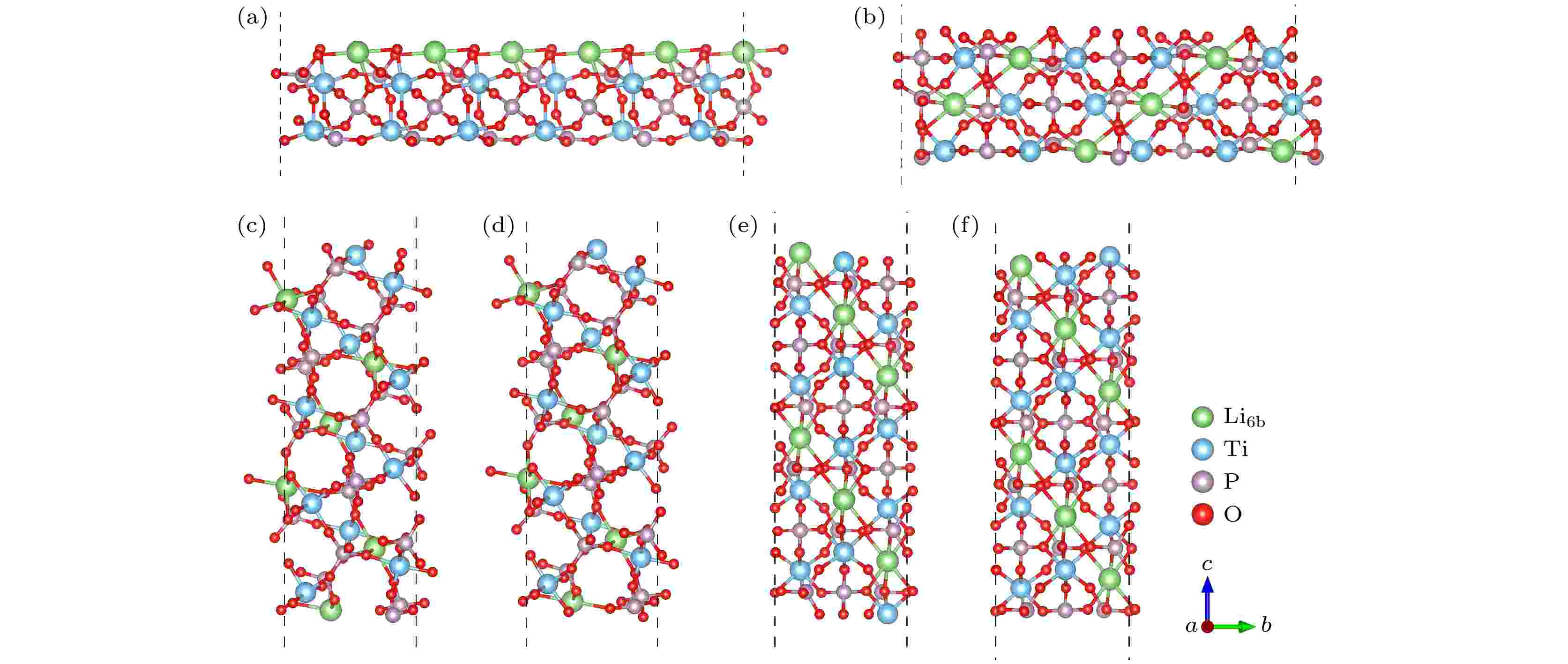
2025, 74 (8): 088201.
doi: 10.7498/aps.74.20250016
Abstract +
NASICON-type Li1+xAlxTi2–x(PO4)3 (LATP), as a promising solid-state electrolyte for lithium-ion batteries, has received significant attention due to its simple preparation, low material cost, and good stability in water and air, but the formation of lithium dendrite greatly limits the applications. To elucidate the source of formation of lithium dendrite, in this study, the effects of Al content on the stability, electronic and Li+ mobility properties of the LATP surface with three Al doping concentrations (2AlTi, 4AlTi, 6AlTi) are investigated by combining first-principles calculations and molecular dynamics simulations. The LiTi2(PO4)3 (LTP) surface is also considered for comparison. The results indicate that the (012) surface terminated with Li atoms is the most stable facet. Further, the surface energy of LATP(012) decreases from 0.68 J/m2 to 0.43 J/m2 with the increase of Al content, suggesting that Al doping can effectively improve the stability of the LATP(012) surface. Electronic structure analysis reveals that the surface of LTP(012) retains the semiconductor properties consistent with the bulk phase, whereas the LATP(012) surface exhibits metallicity, which provides an electron pathway for forming the metallic Li . Consequently, the metallic characteristic of the LATP(012) surface is a reason for its lithium dendrite growth. For the Li+ transport properties, two different migration modes: vacancy migration and interstitial migration, are included. When Li+ migrates within the outermost surface, the migration barrier via vacancy is 1.67/1.69 eV for the LTP/LATP (012) surface, while the migration barrier via interstitial is 1.16 eV for LTP(012) and decreases from 1.31 to 0.87 eV with the increase of Al content for LATP(012). Obviously, within the outermost surface, Al doping can reduce the migration barrier of Li+. When Al doping concentration is 6AlTi, the migration barrier is lowest (0.87 eV). Nevertheless, the lowest migration barrier (0.87 eV) for Li+ on the LATP surface is significantly higher than its bulk minimum value of 0.34 eV. When Li+ migrates from the subsurface layer to the outermost surface, the migration barrier is 2.76 eV for LTP(012) and 2.05 eV, 3.20 eV, and 3.06 eV for LATP(012) with 2AlTi, 4AlTi, and 6AlTi content, respectively. All these migration barriers are greater than 2.00 eV, which prevents Li+ from migrating from the subsurface layer to the outermost surface for both LTP and LATP surfaces. Hence, the slow Li+ migration represents another important factor contributing to lithium dendrite growth on the LATP surface. Fortunately, increasing the Al doping concentration can reduce the migration barrier of Li+ and thus enhance its diffusion performance on the LATP surface. Molecular dynamics simulations further reveal that the diffusion behavior of Li+ on the LATP surface is influenced by a combination of factors, including Al content, Li+ occupancy, and ambient temperature. In particular, LATP(012)/6AlTi, LATP(012)/4AlTi, and LATP(012)/2AlTi possess their highest Li+ diffusion coefficients at 900 K, 1100 K, and 1300 K, respectively. Besides, Li+ near the Al doping site is easier to diffuse on the LATP(012) surface. Thus, our study indicates that by changing Al content, Li+ occupation positions, and the temperature, the Li+ diffusion performance of LATP(012) can be effectively modified, thereby suppressing the formation of lithium dendrites on the LATP(012) surface.
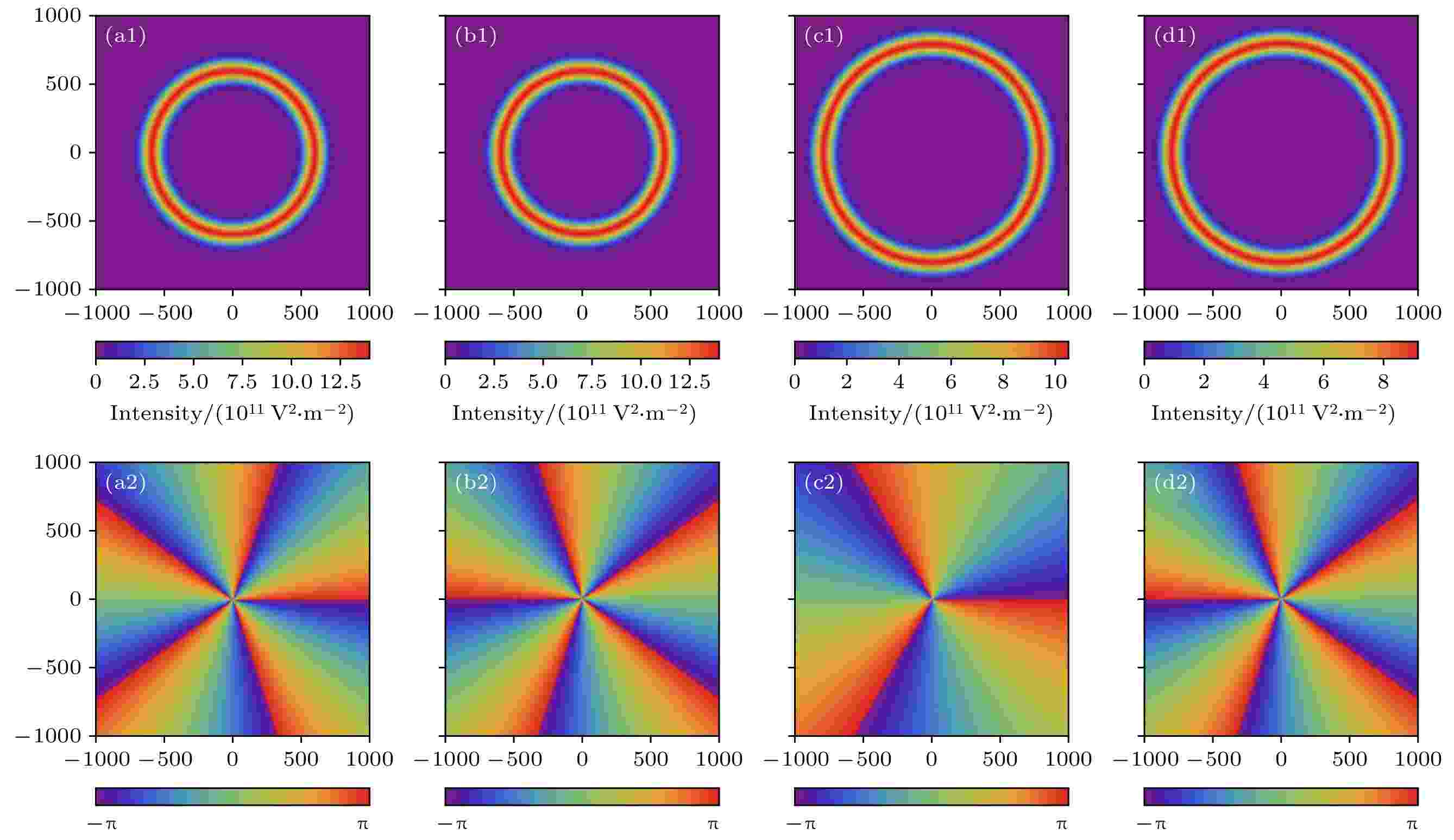
2025, 74 (8): 088702.
doi: 10.7498/aps.74.20241768
Abstract +
The double-ring perfect vortex beam (DR-PVB) is generated through the superposition of two concentric perfect vortex beams (PVBs). In this work, firstly, the intensity and phase distribution of the DR-PVB in the source plane are studied. Secondly, based on the Huygens-Fresnel principle and the Collins formula, the intensity distribution of the DR-PVB after being focused by an ABCD optical system that includes a focusing lens is obtained. The results indicate that the intensity distribution of the focused beam is consistent with the interference pattern of two Bessel Gaussian beams. Furthermore, the number of spots in the focused intensity distribution is a multiple of the absolute value of the difference in topological charges between two PVBs. On the other hand, the overall size of the light beam can be adjusted by changing the focal length of the lens. Thirdly, the optical radiation force, exerted by the focused DR-PVB, on Rayleigh particles with different refractive indices, silica and bubbles, are analyzed, respectively. The results show that the focused DR-PVB can capture both high and low refractive index particles in water. In addition, by comparing the focused DR-PVBs under different radius combinations, it found that the light intensity distribution can be changed with the beam radius, which leads the position and quantity of the captured particles to change. This result provides a new idea for adjusting the capture of particles in future experiments. Finally, the gradient forces, scattering, and Brownian forces acting on the particles in the x, y, and z directions are analyzed, respectively. Based on our analysis, the condition for stable particle capture, where the gradient force must overcome the effects of Brownian motion and scattering forces, is established. Therefore, the theoretical size range of particles that can be captured by the focused DR-PVB is determined. Compared with other beams, such as Airy beams and Bessel beams, the focused DR-PVB can be modulated by changing the topological charges of the two PVBs, making it possible to capture multiple particles. These results have potential applications in optical manipulation.
NUCLEAR PHYSICS
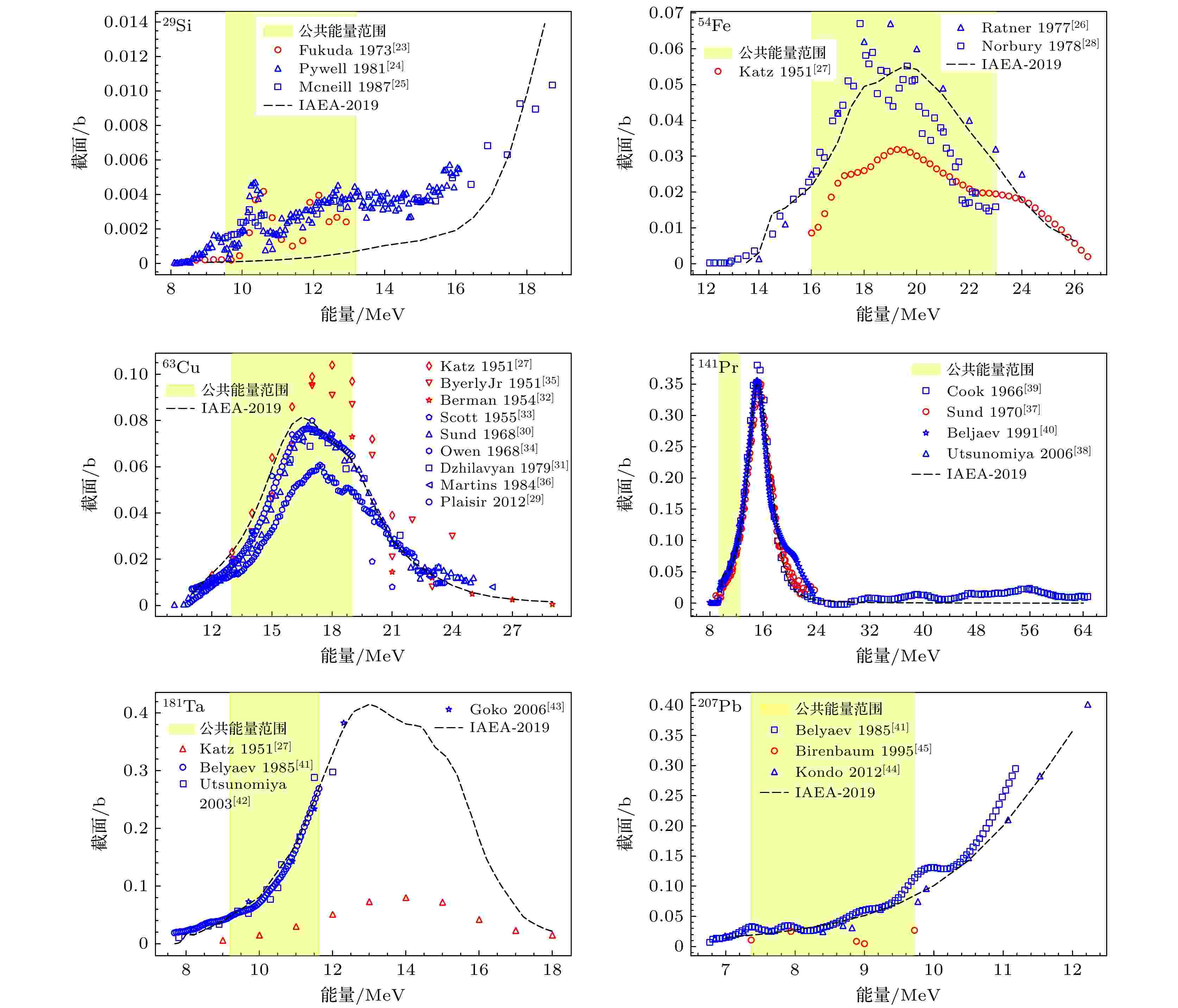
2025, 74 (8): 082501.
doi: 10.7498/aps.74.20241775
Abstract +
CONDENSED MATTER: STRUCTURAL, MECHANICAL, AND THERMAL PROPERTIES
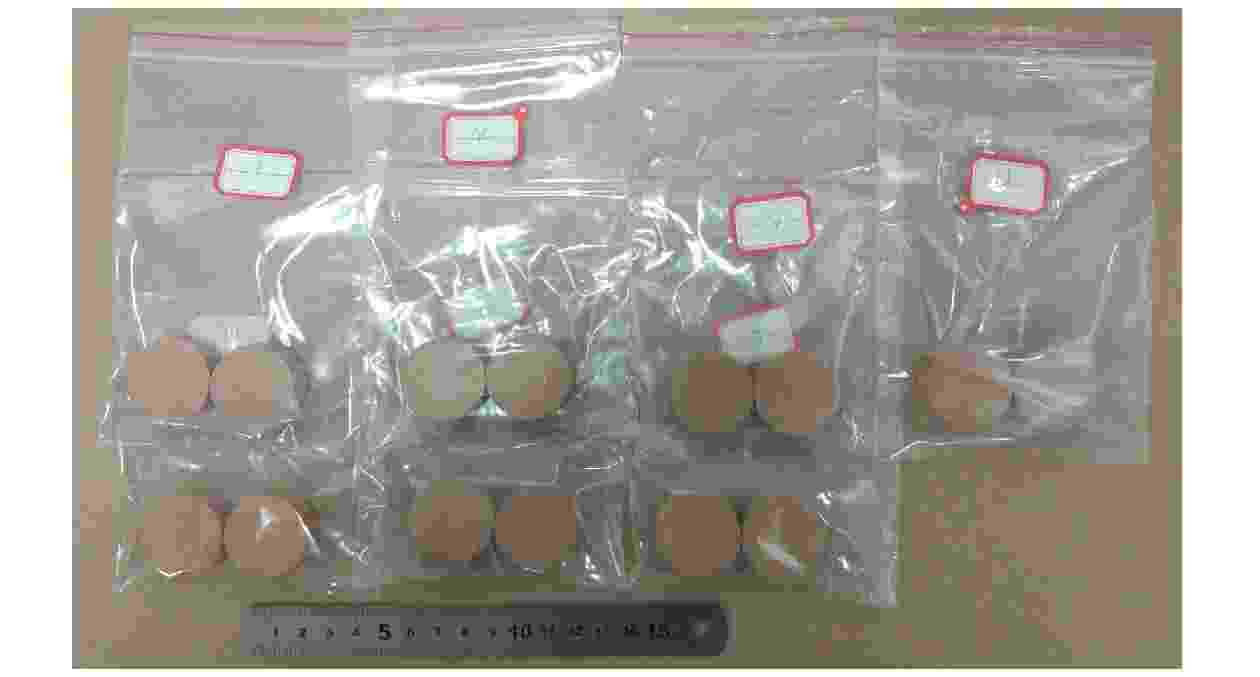
2025, 74 (8): 084401.
doi: 10.7498/aps.74.20241048
Abstract +
Traditional composite infrared decoy, magnesium/teflon (Mg/PTFE), has been widely used in countering infrared guided weapons since its advent. However, with the development of infrared guidance technology, its drawbacks such as insufficient far-infrared radiation and high combustion temperature emerge, making it difficult to counter novel infrared guided weapons. To address this issue, a strategy of utilizing zirconium silicate (ZrSiO4) as an additive is proposed to improve the infrared radiation of infrared decoy. Therein, seven formulations with different ratios of ZrSiO4 are designed based on the basic formula of trilead tetraoxide/ magnesium/teflon (Pb3O4/Mg/PTFE) mixed powder. And the effect of ZrSiO4 serving as an additive on the performance of Pb3O4/Mg/PTFE infrared decoy is analyzed through experiments. First, initial experiments are conducted on the thermal decomposition characteristics of the basic formula (ZrSiO4 addition ratio is 0%) and its variant counterpart with 12% ZrSiO4. Subsequently, the combustion behaviors of the compacted formulation samples are examined using an infrared thermal imager operating within the 7.5–14 μm range, subsequently, the combution time, combution temperature, burning rate, radiation area, radiance, and radiation intensity of individual samples are computed. These results show that incorporation of ZrSiO4 reduces the intensity of the primary exothermic peak during the reactions with a mixed infrared decoy agent, yielding suboptimal thermal efficiencies. Furthermore, the combustion durations of the samples progressively increase with ZrSiO4 addition increasing, accompanied by consistent reductions in their combustion temperatures. Specifically, the sample reaction time peaks at 3.73 s at a ZrSiO4 addition ratio of 18%, while the combution temperature drops to a minimum value of 765.46 ℃. Moreover, the far-infrared radiance and radiation intensity demonstrate an initial-increase-then-decrease trend with ZrSiO4 addition increasing, thereby achieving the maximum values of 2461 W/(m2·sr) and 142 W/sr, respectively at a ZrSiO4 addition ratio of 6%. Furthermore, the far-infrared radiance and radiation intensity of the base formulation are enhanced when ZrSiO4 addition ratios are kept within 18% and 9% respectively. Based on the comprehensive analysis of the experimental data and considering the requirements for the infrared decoy in practical applications, a formulation with a ZrSiO4 addition ratio of 6% is adopted as an improved formulation for the Pb3O4/Mg/PTFE infrared decoy.

2025, 74 (8): 086801.
doi: 10.7498/aps.74.20250076
Abstract +
ATOMIC AND MOLECULAR PHYSICS

2025, 74 (8): 083201.
doi: 10.7498/aps.74.20250052
Abstract +
THE PHYSICS OF ELEMENTARY PARTICLES AND FIELDS
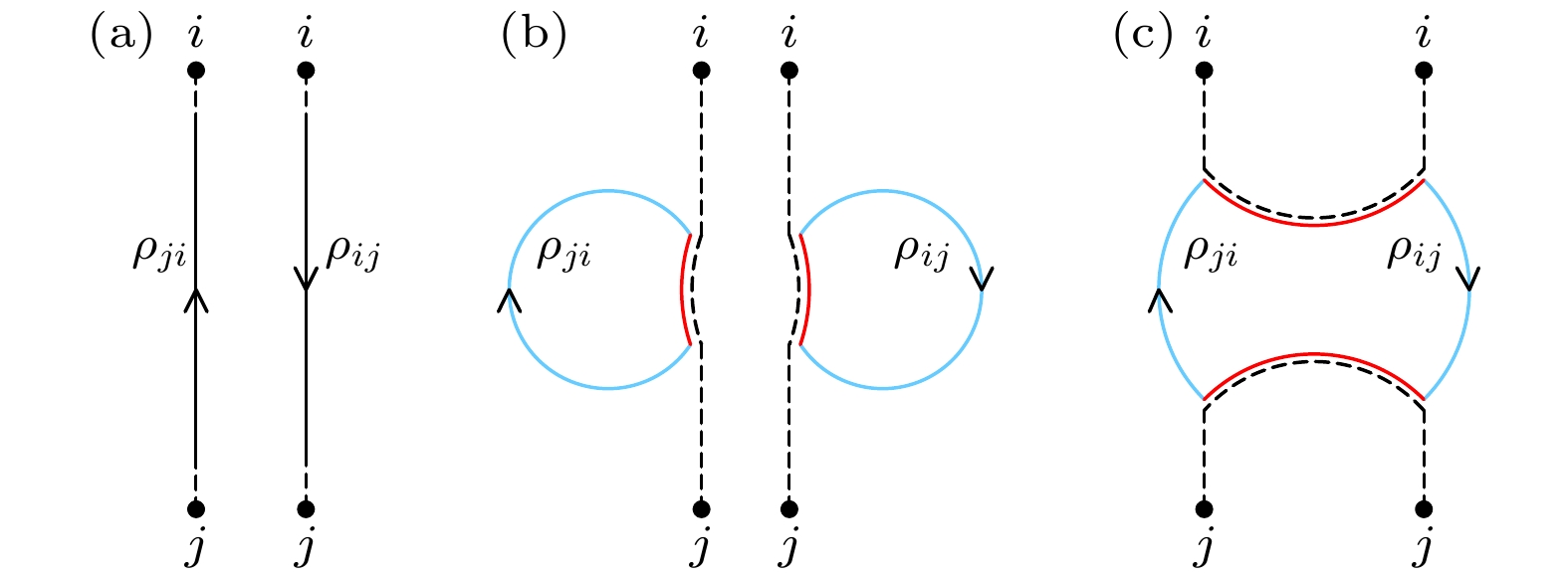
2025, 74 (8): 081101.
doi: 10.7498/aps.74.20241751
Abstract +
PHYSICS OF GASES, PLASMAS, AND ELECTRIC DISCHARGES
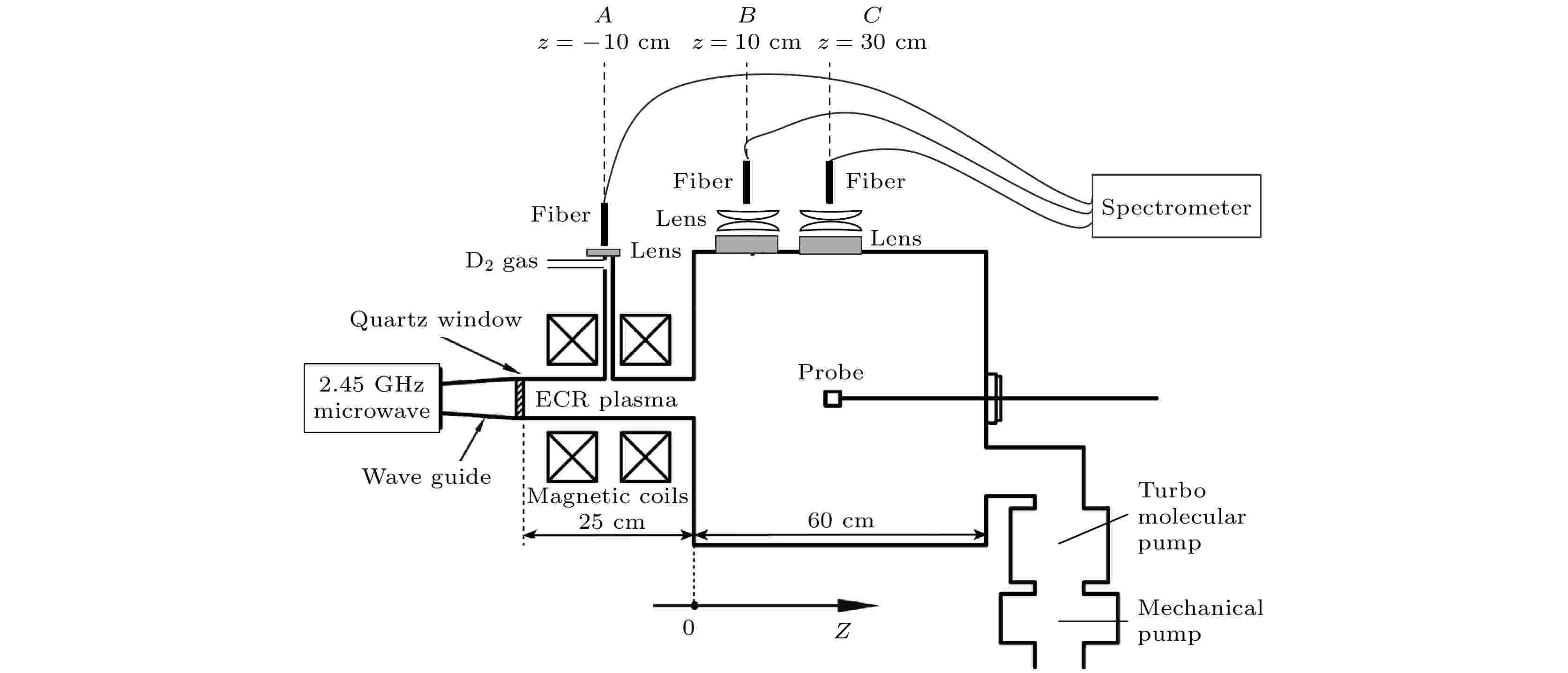
2025, 74 (8): 085201.
doi: 10.7498/aps.74.20241605
Abstract +






